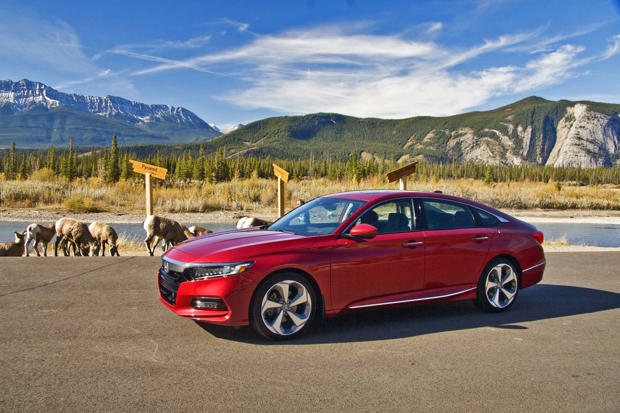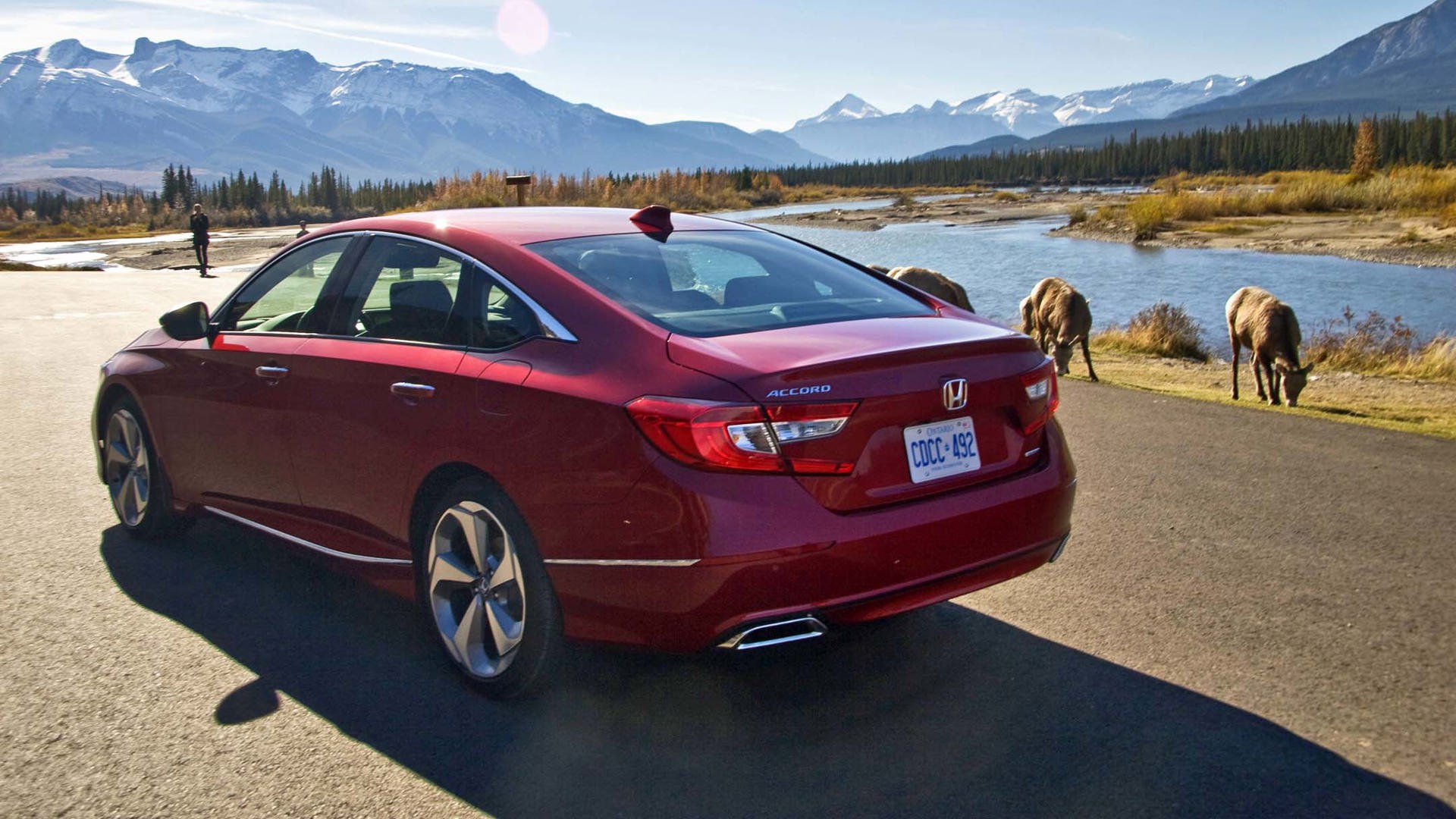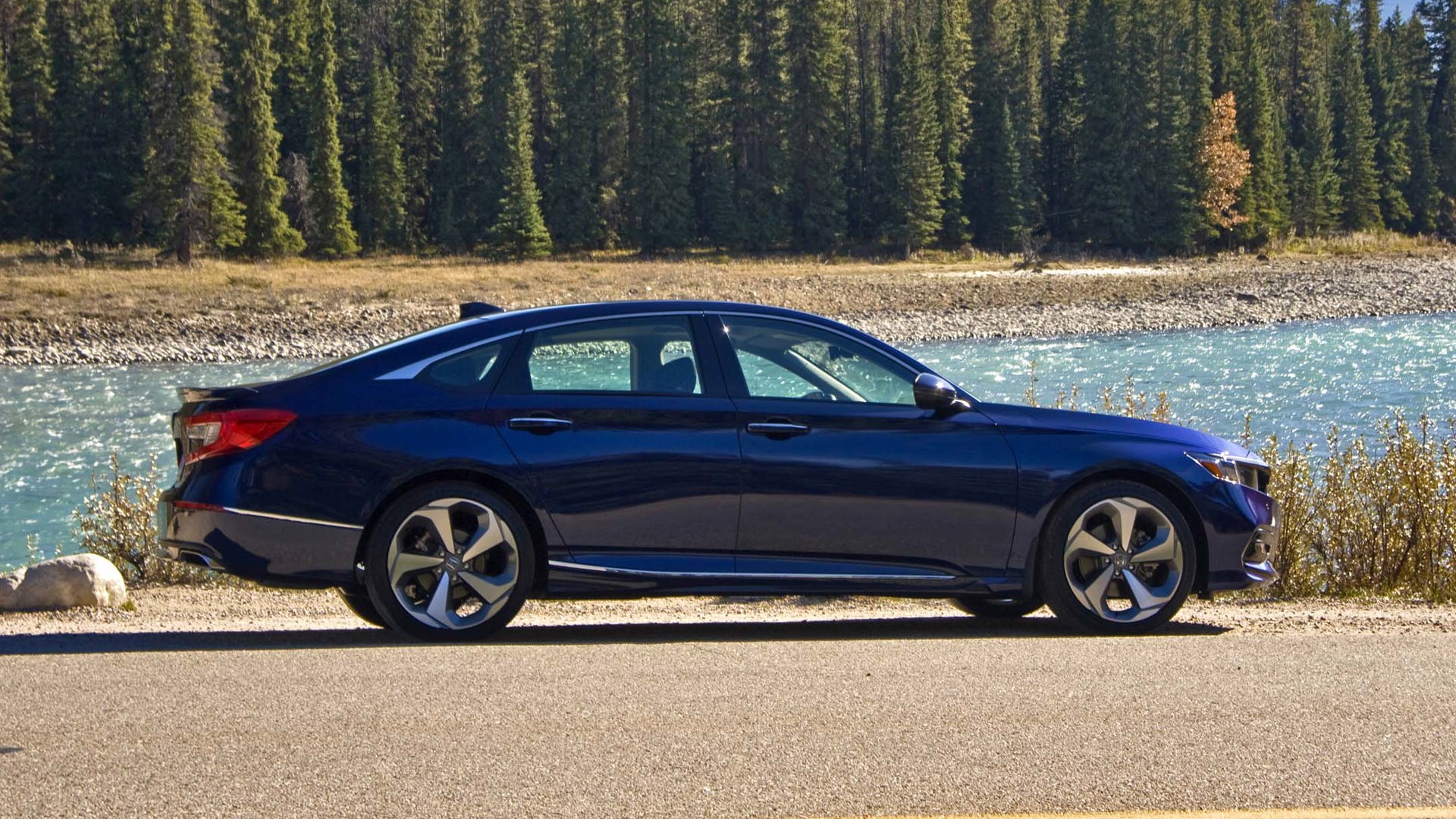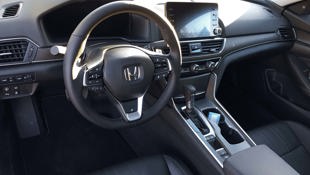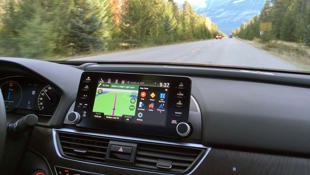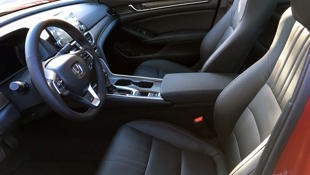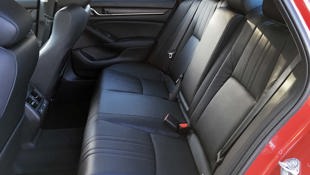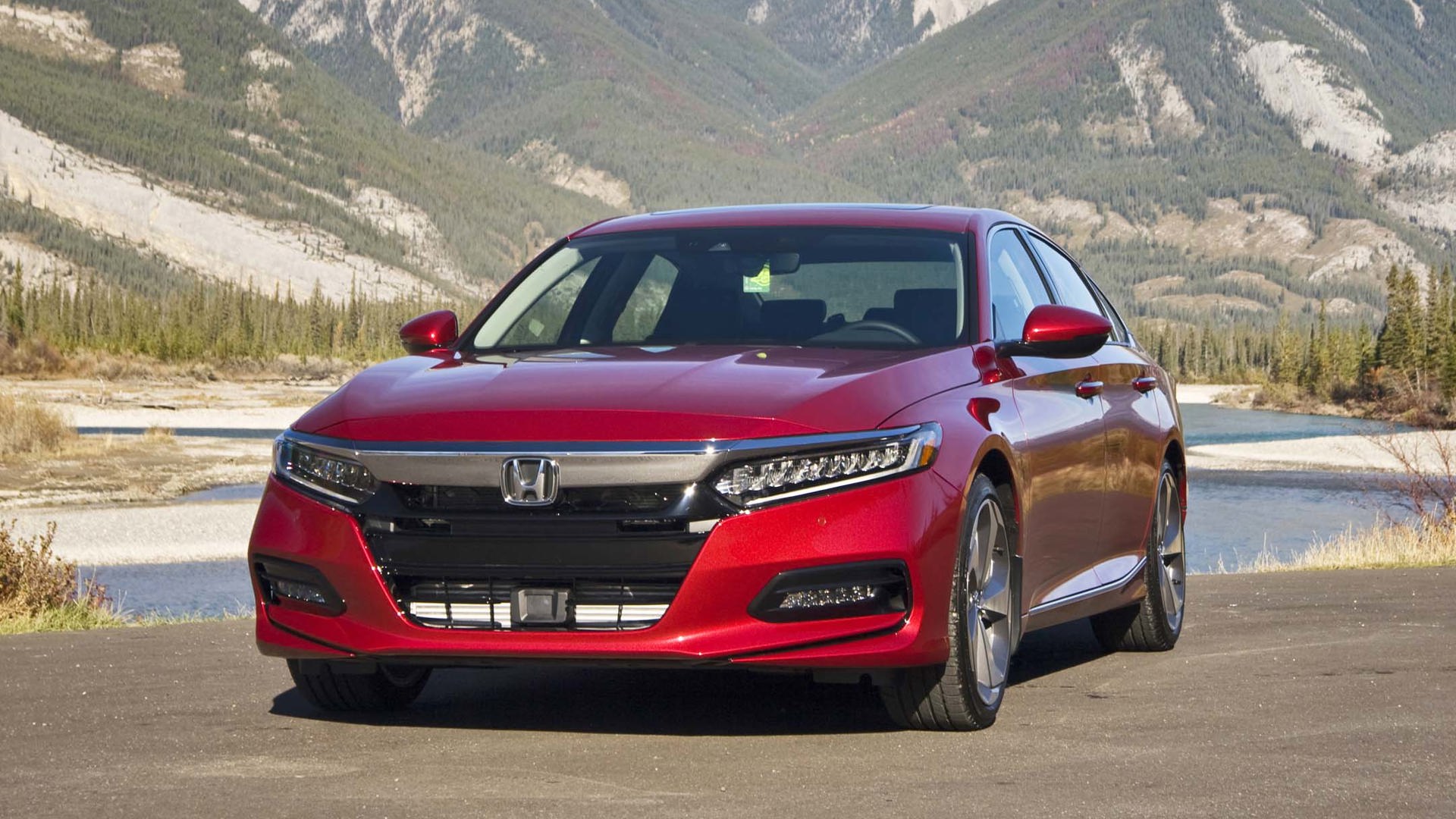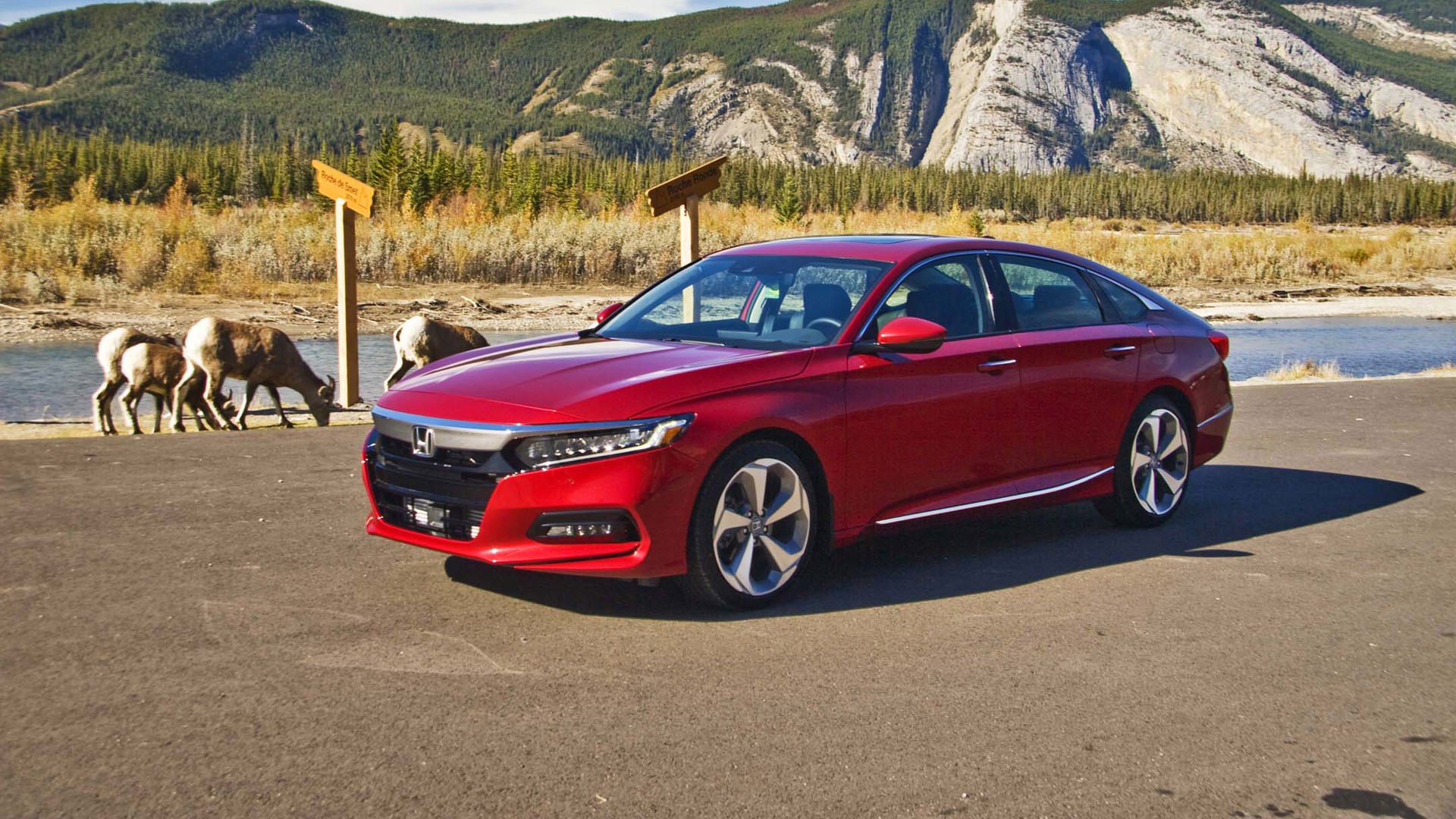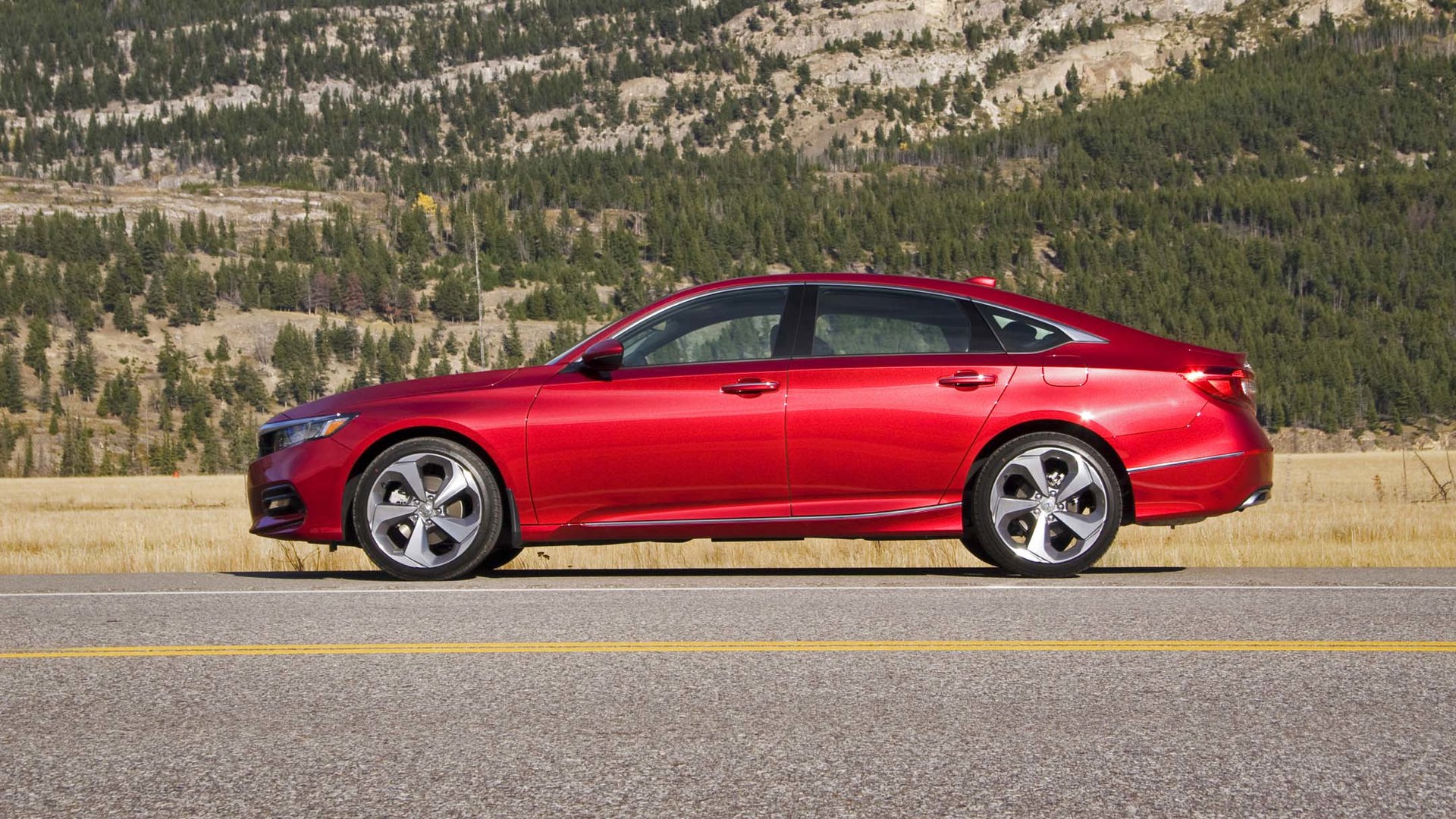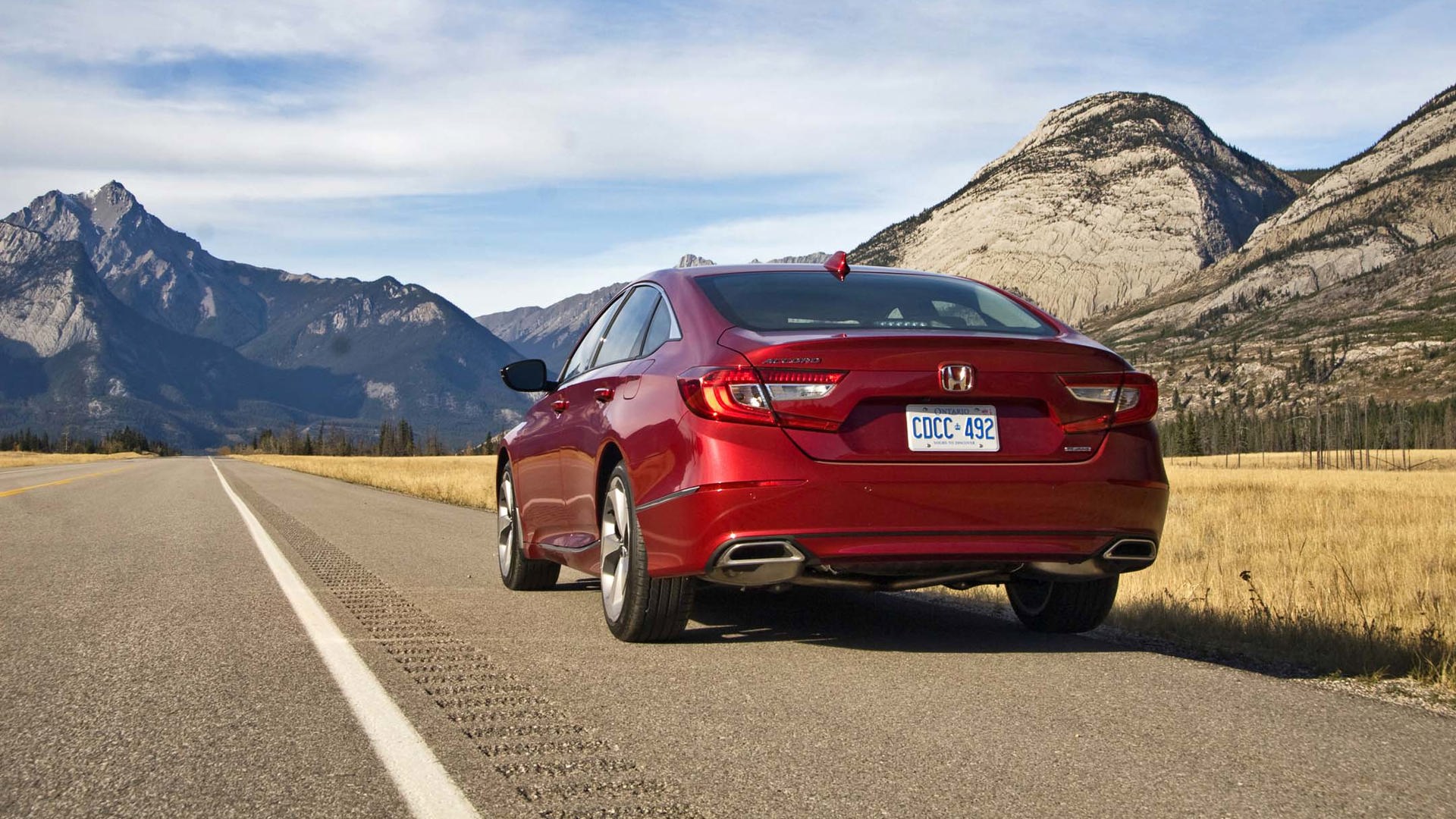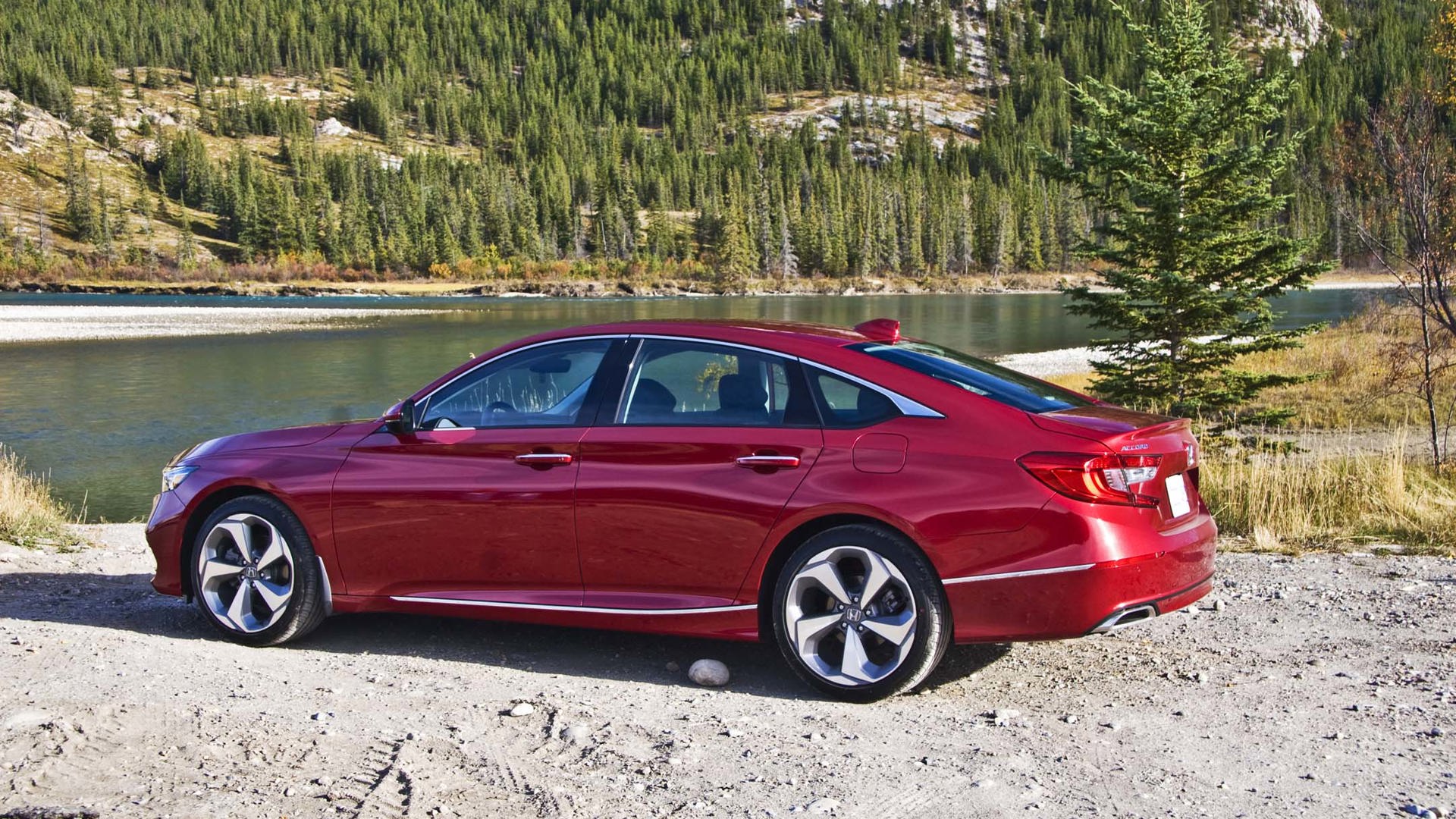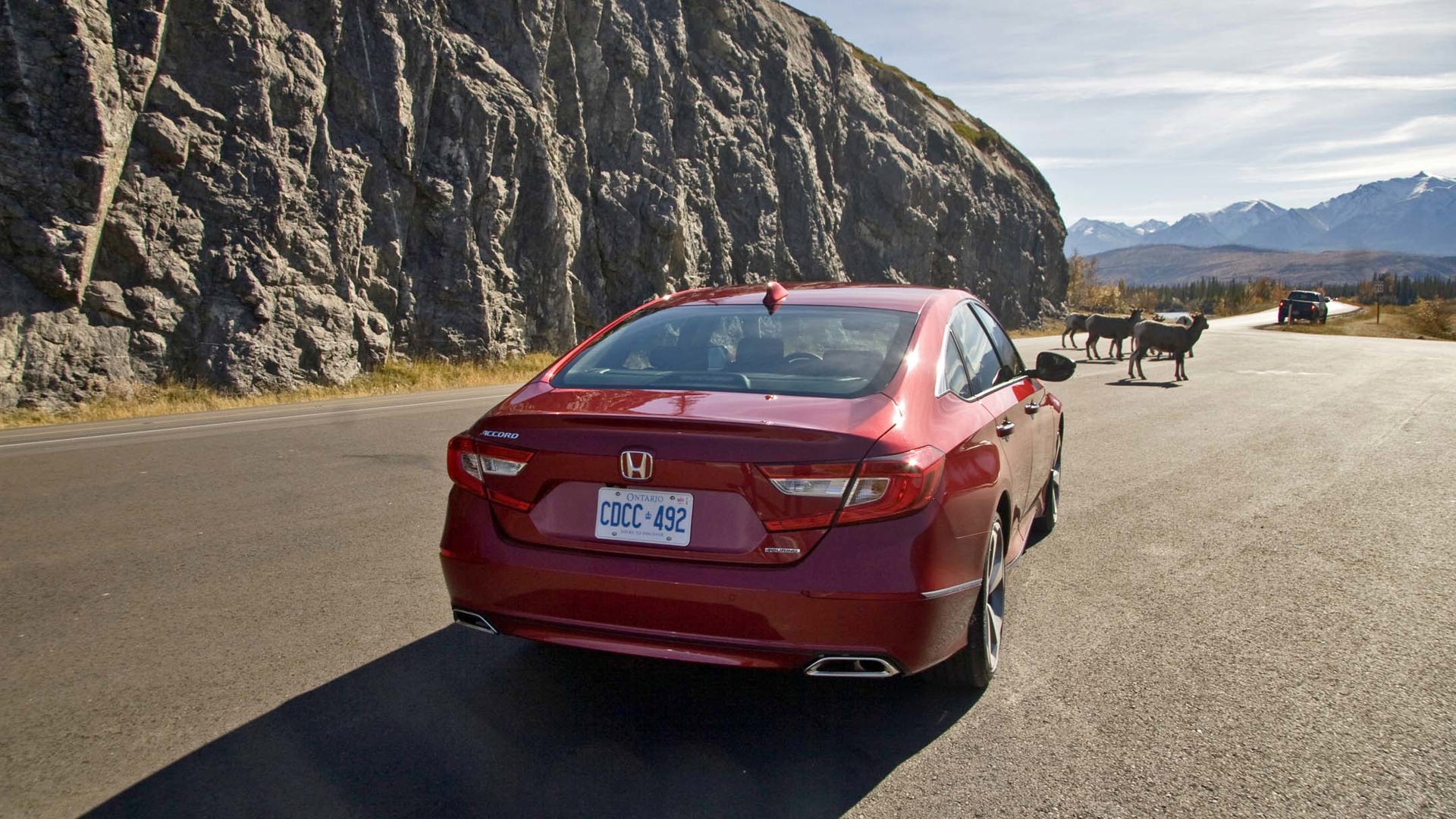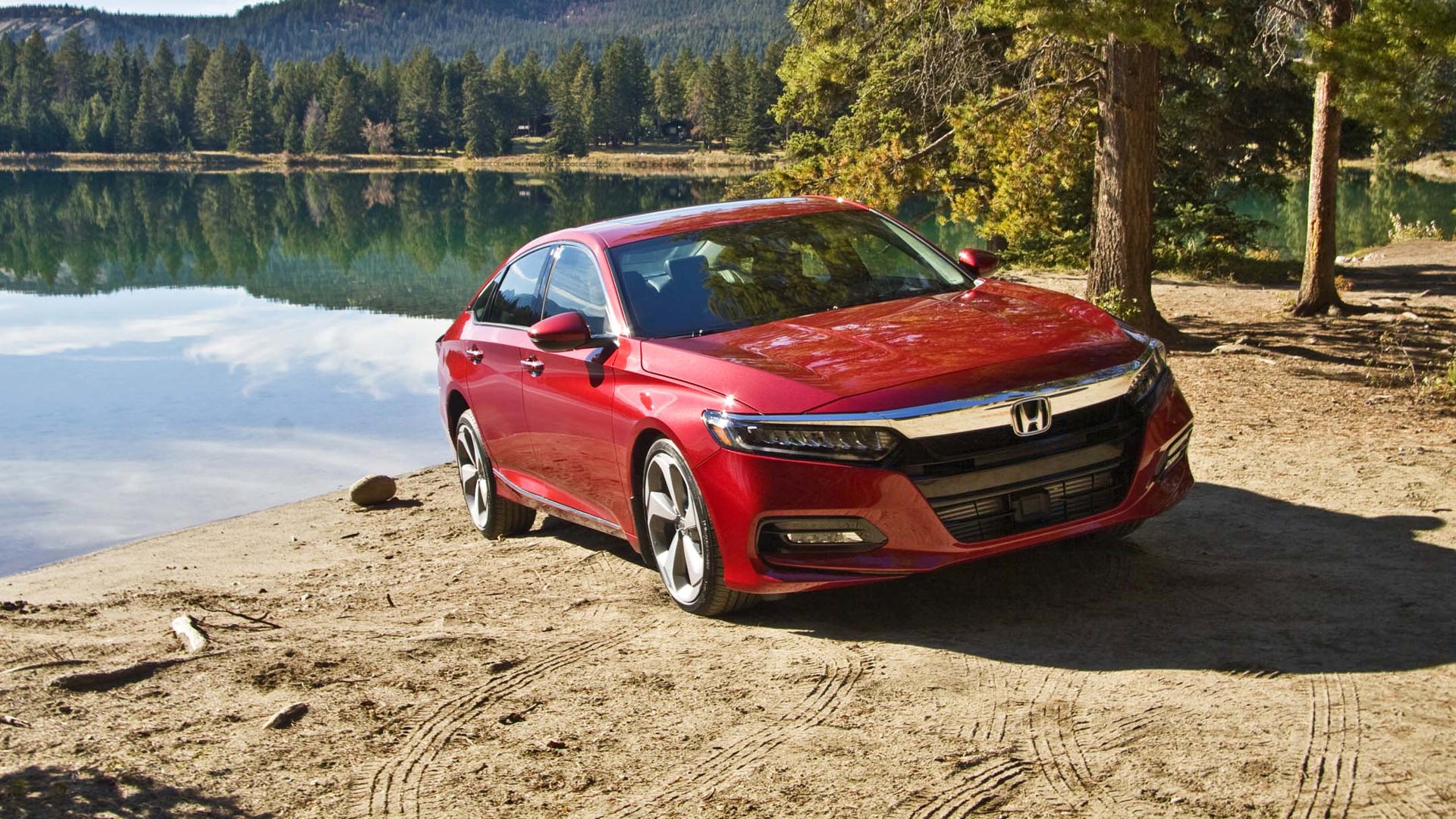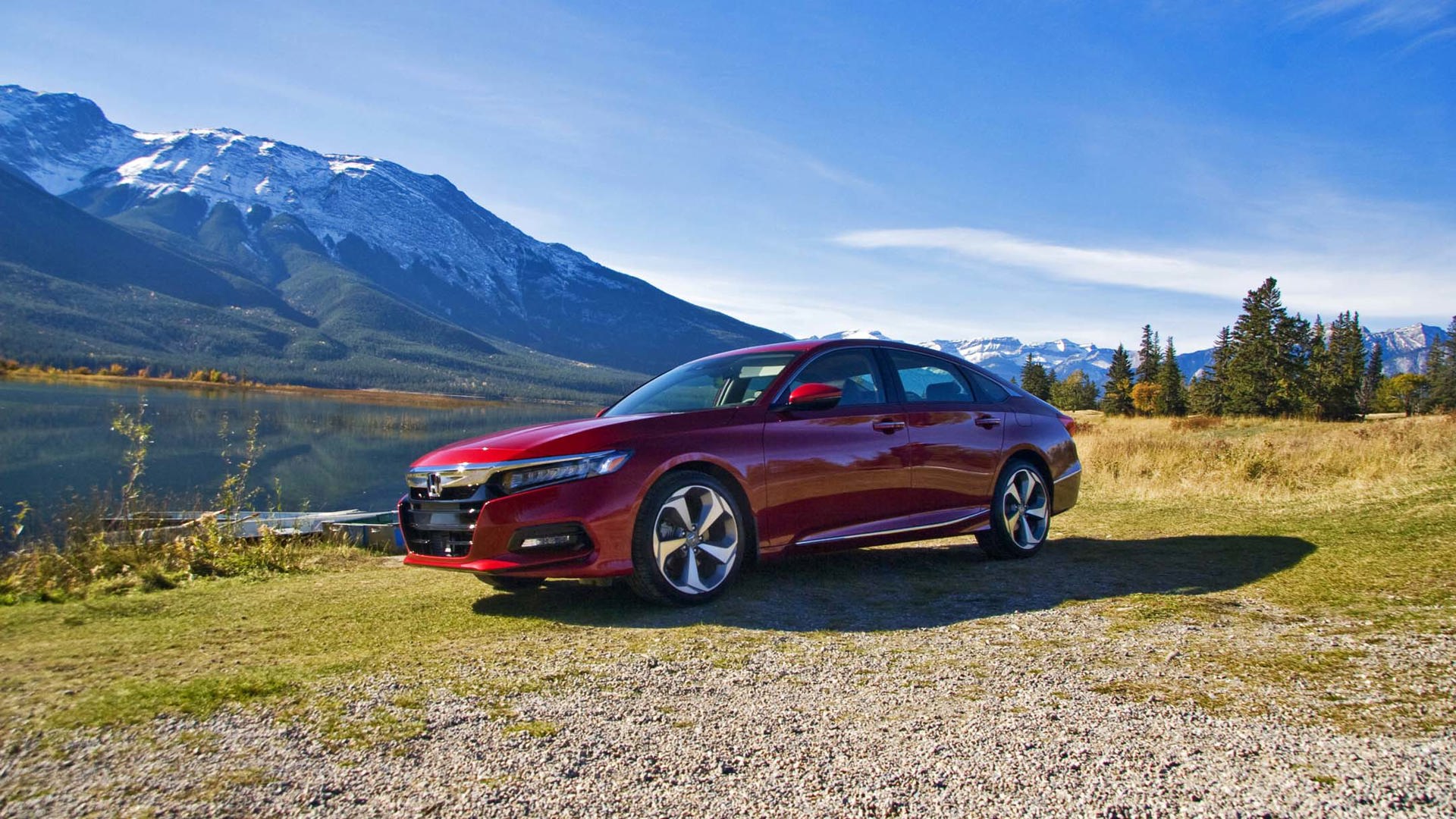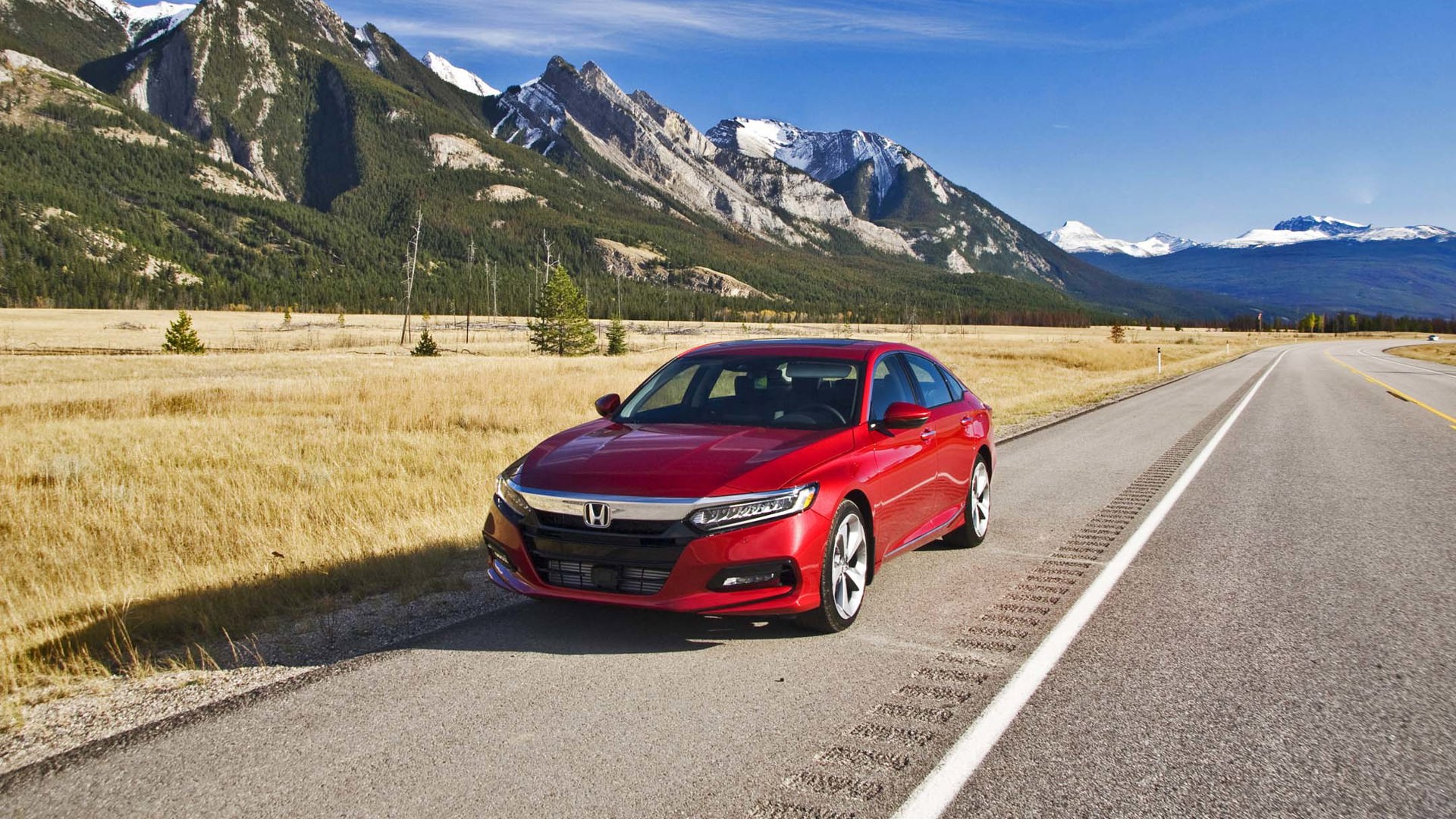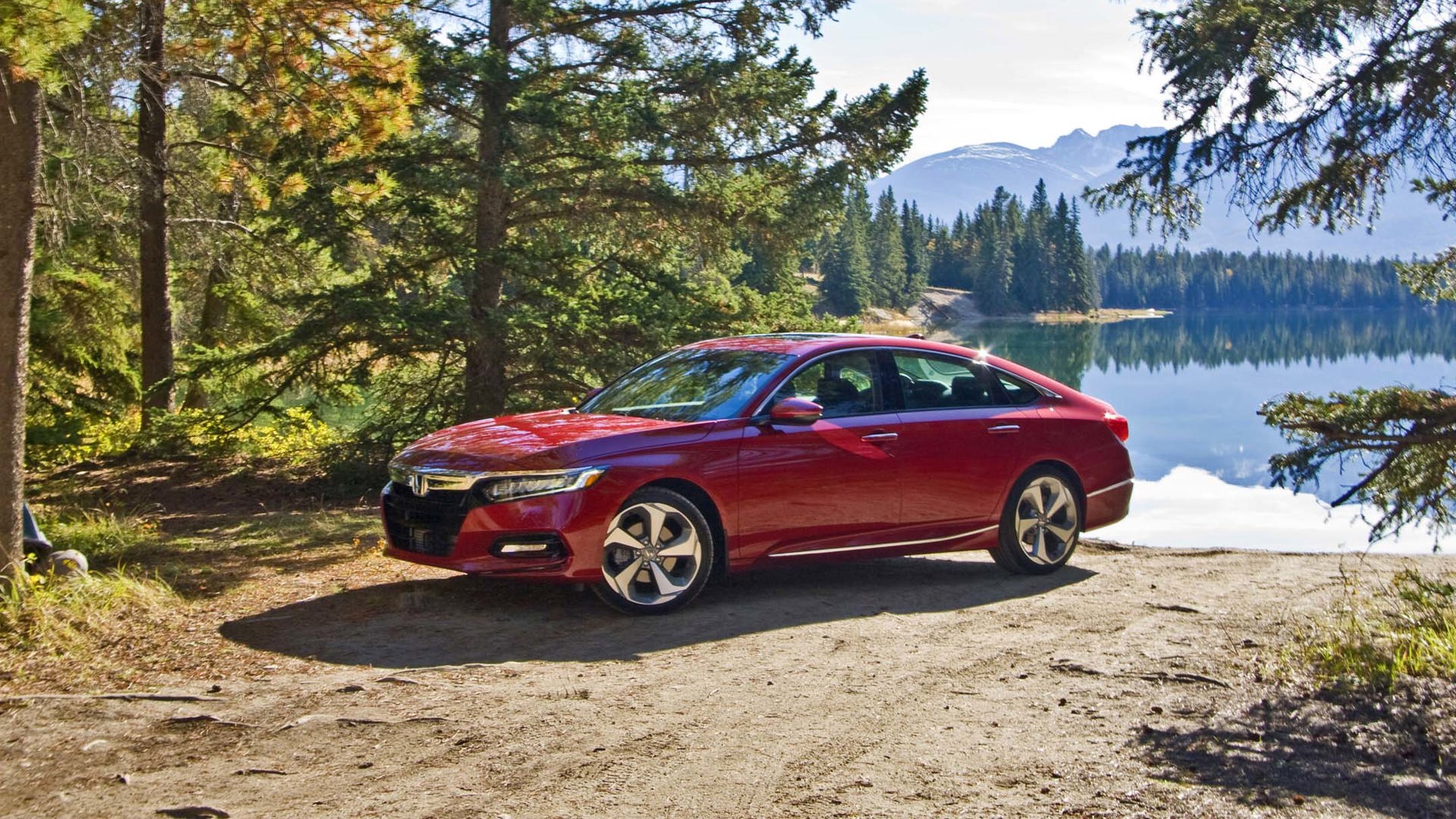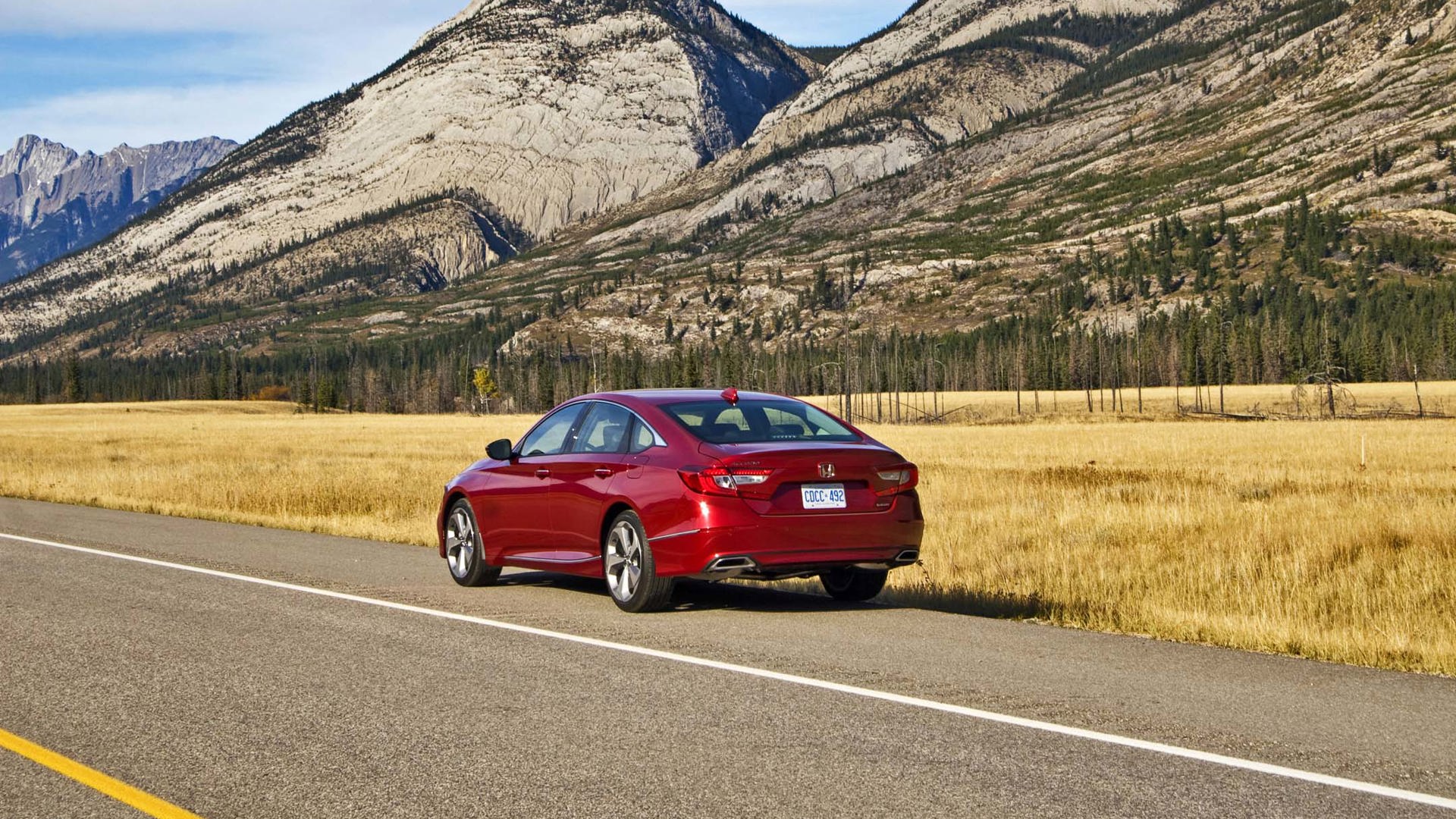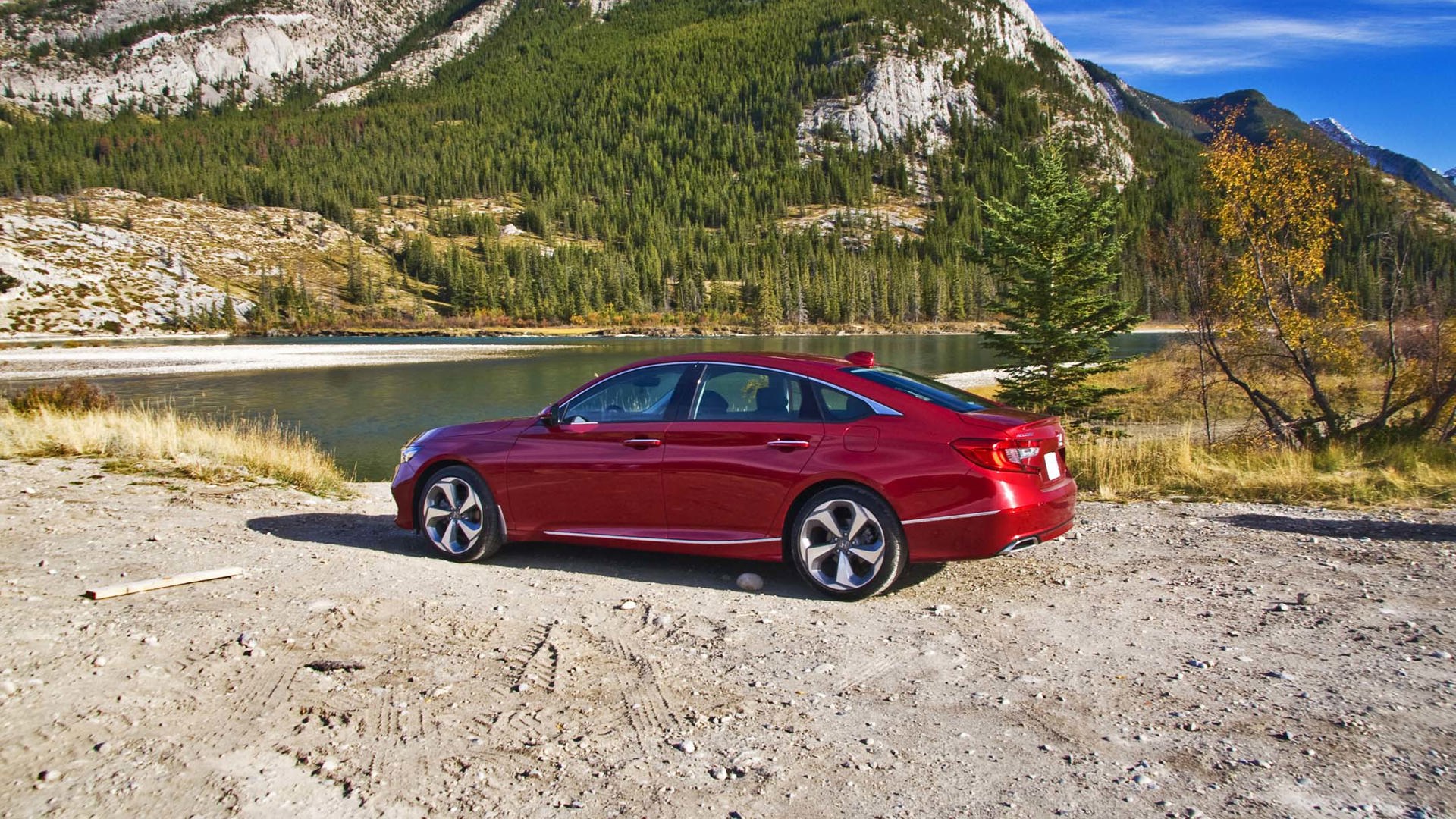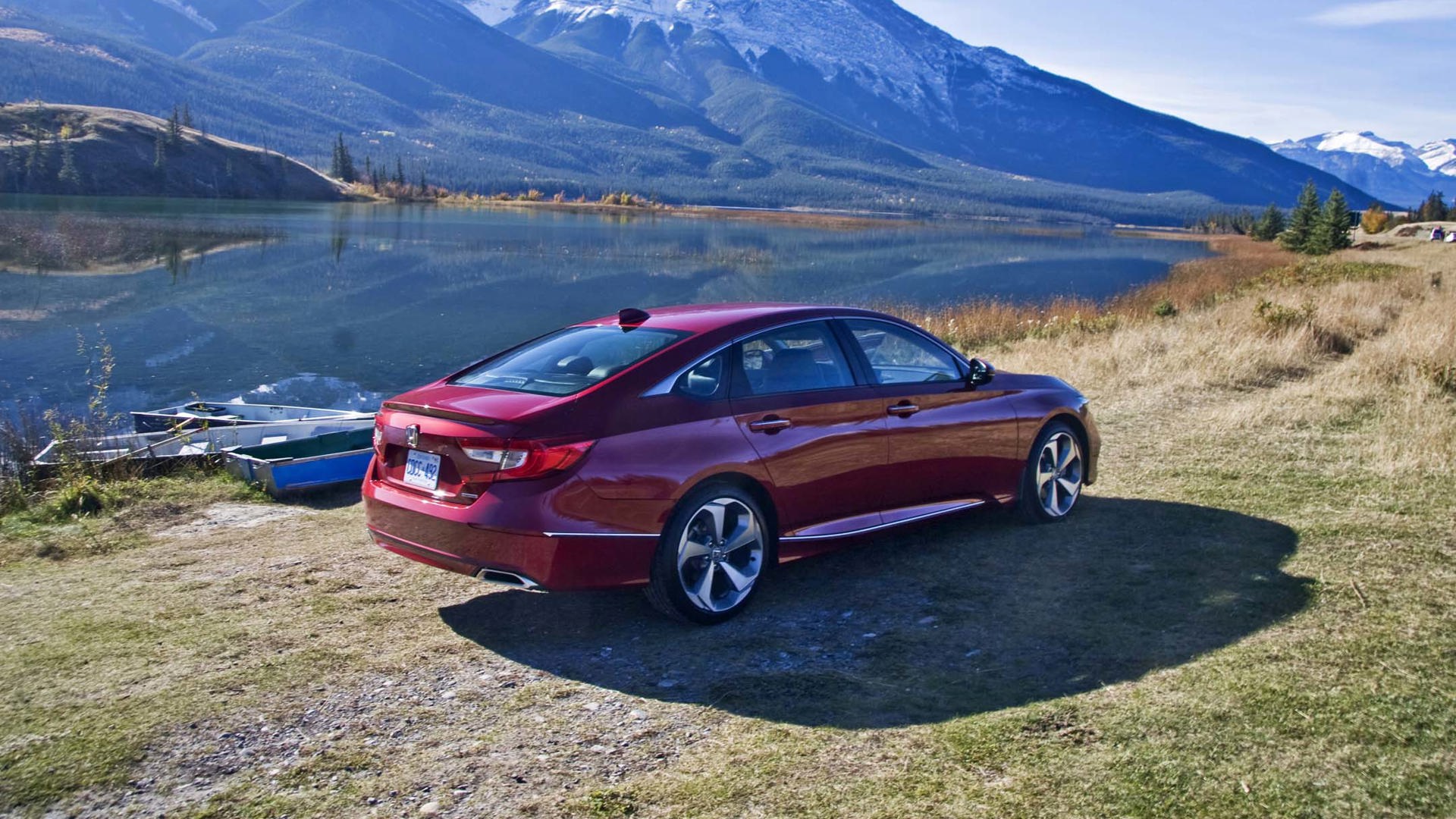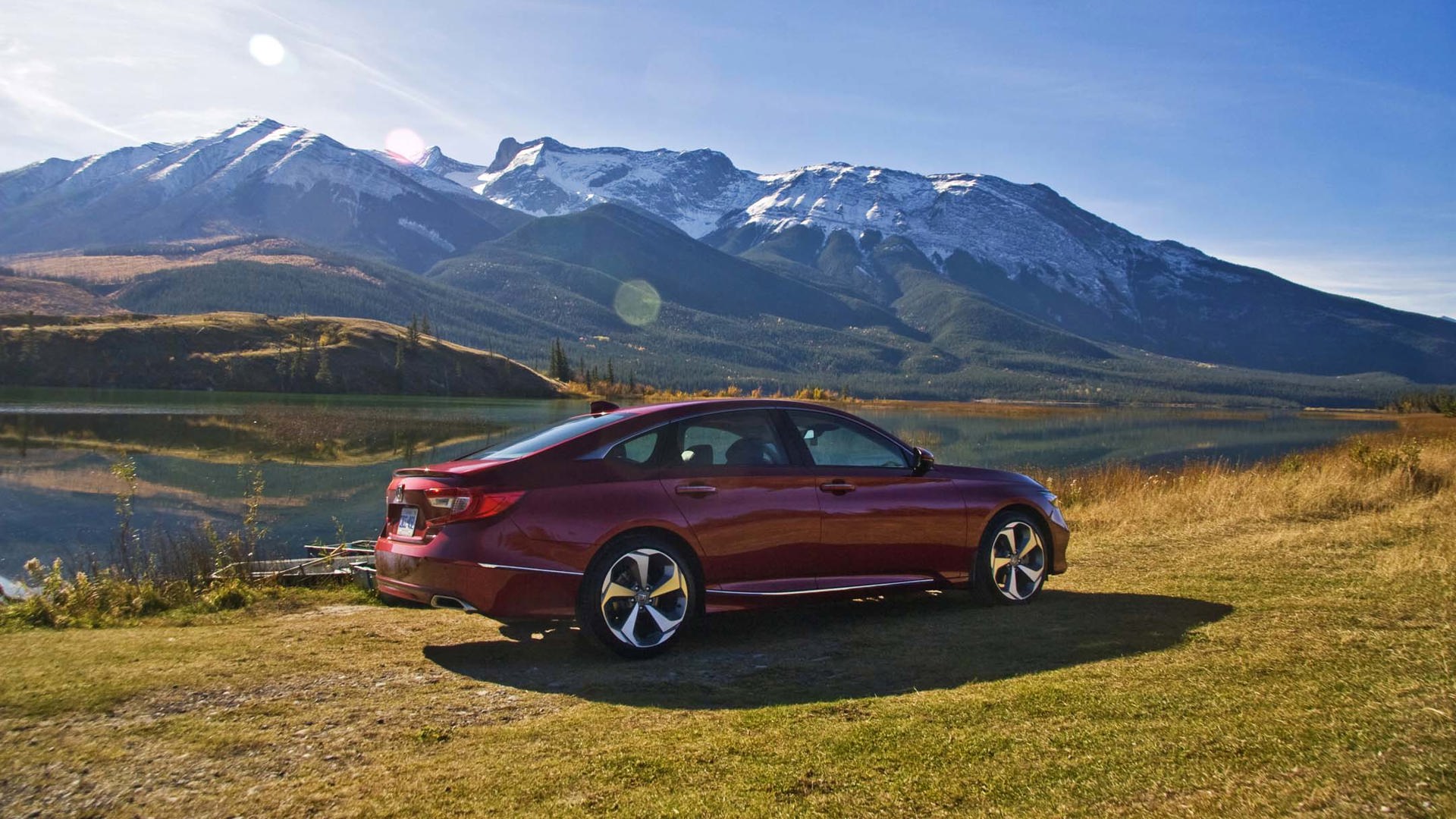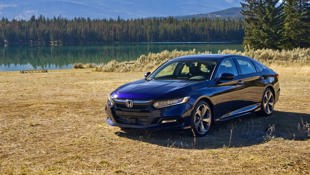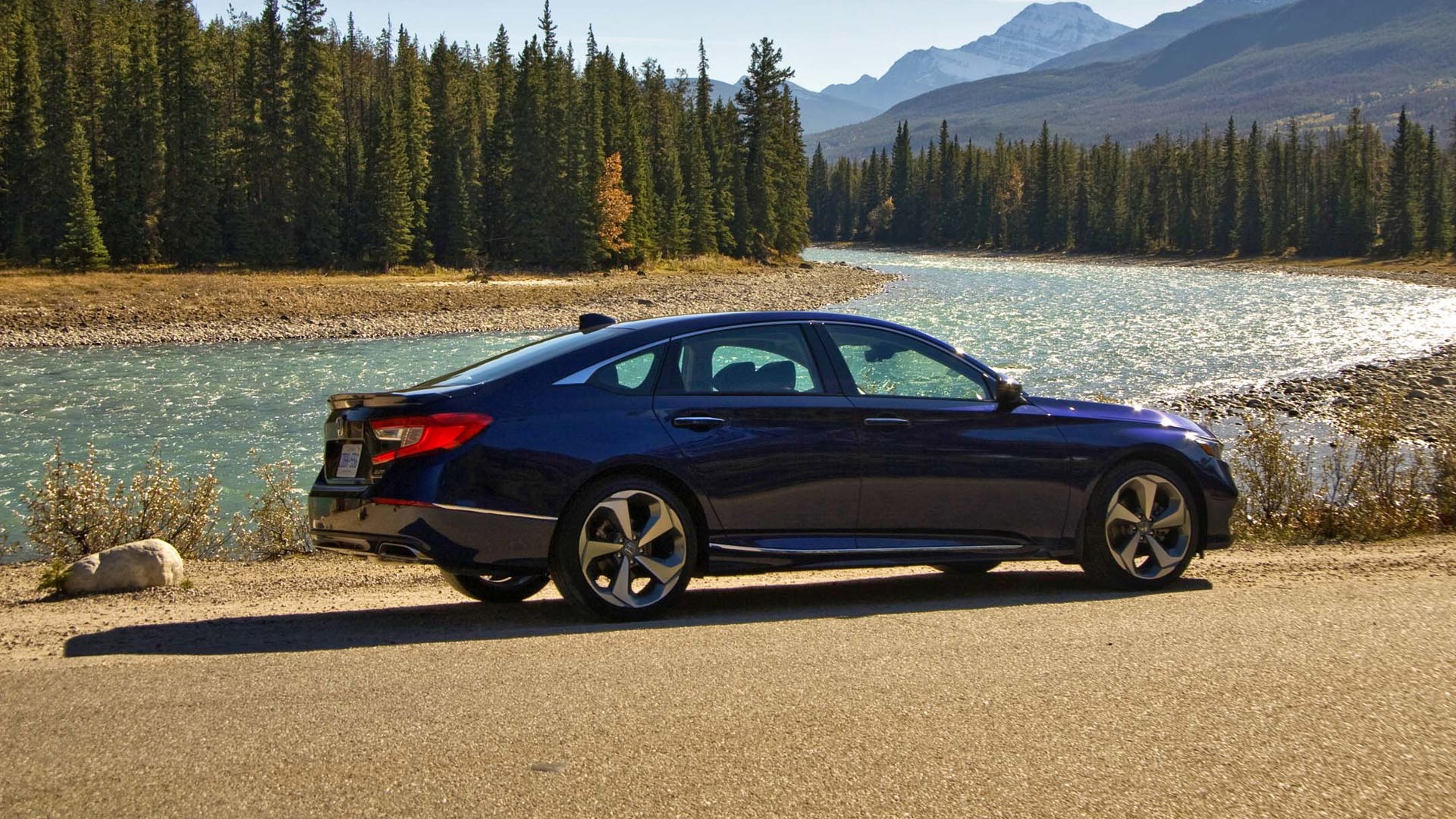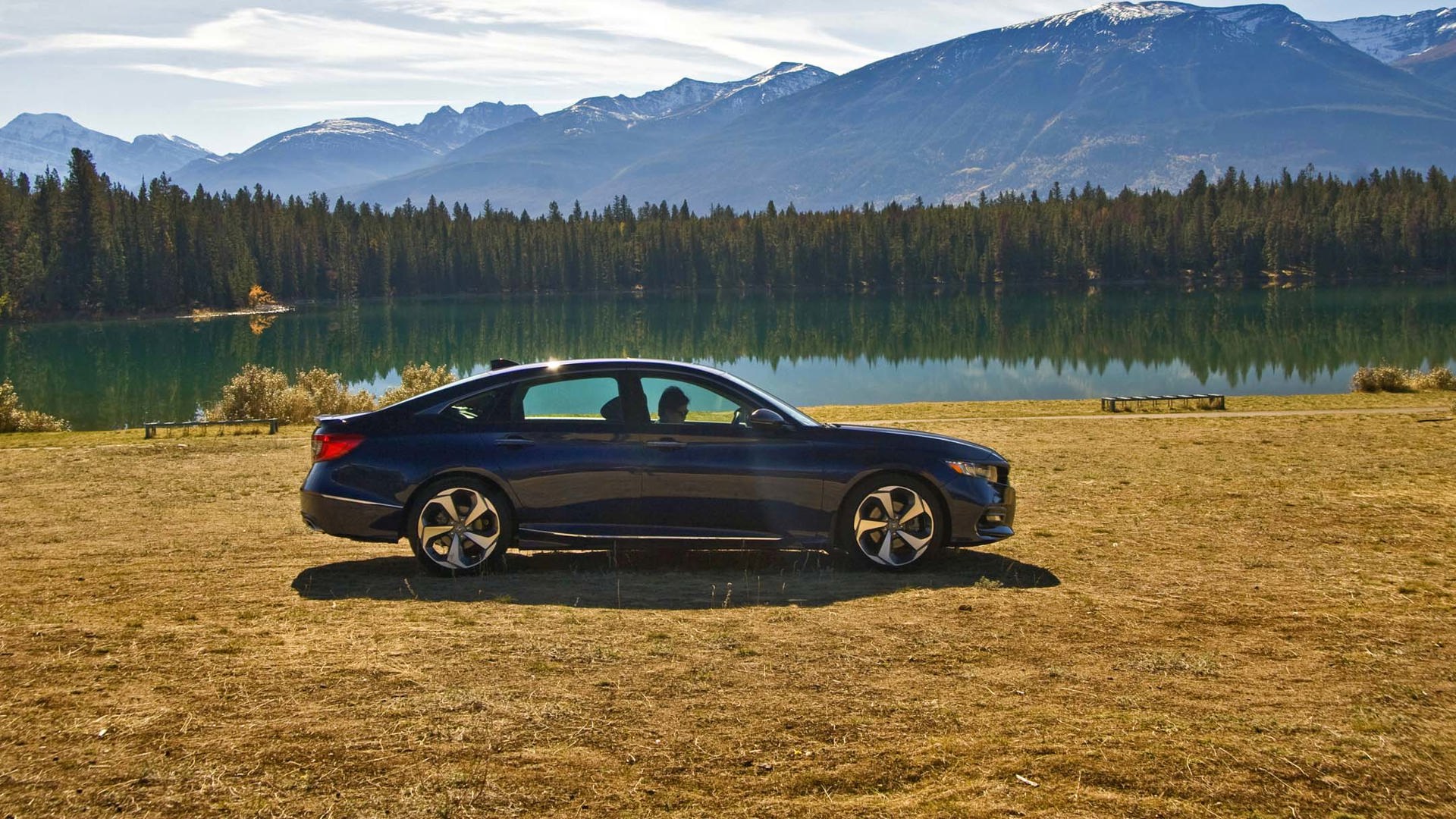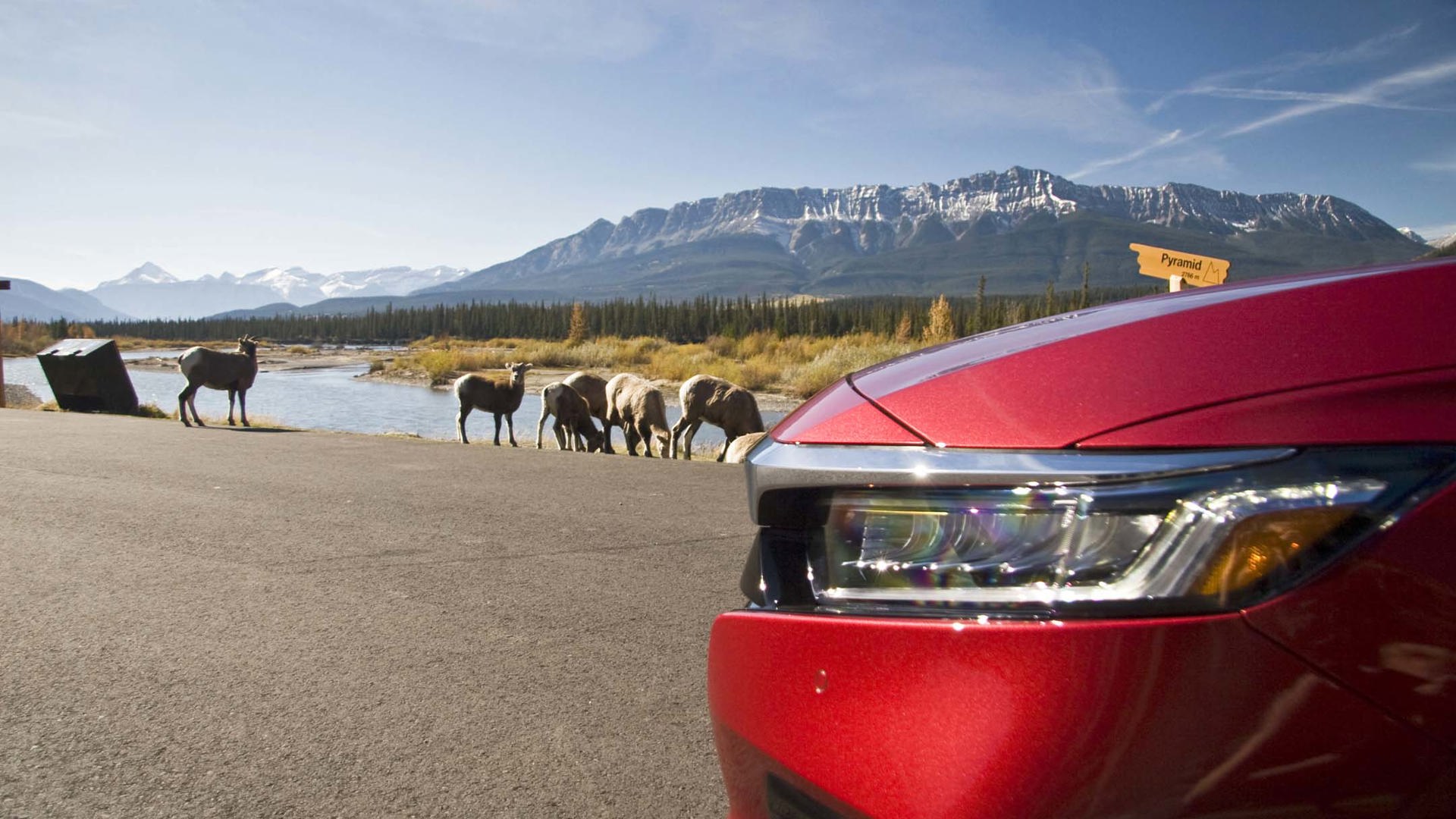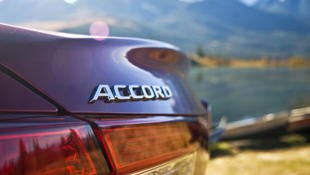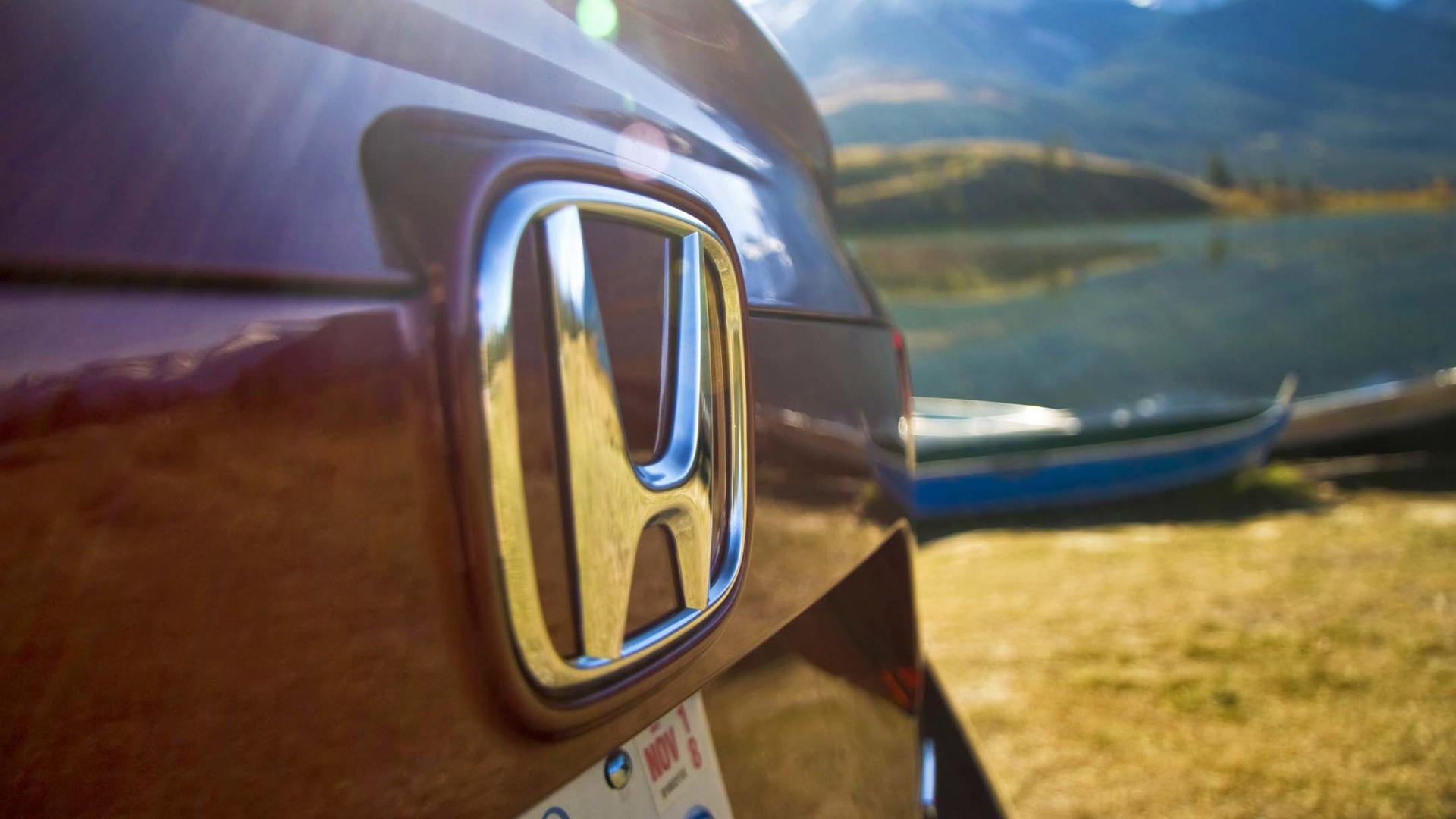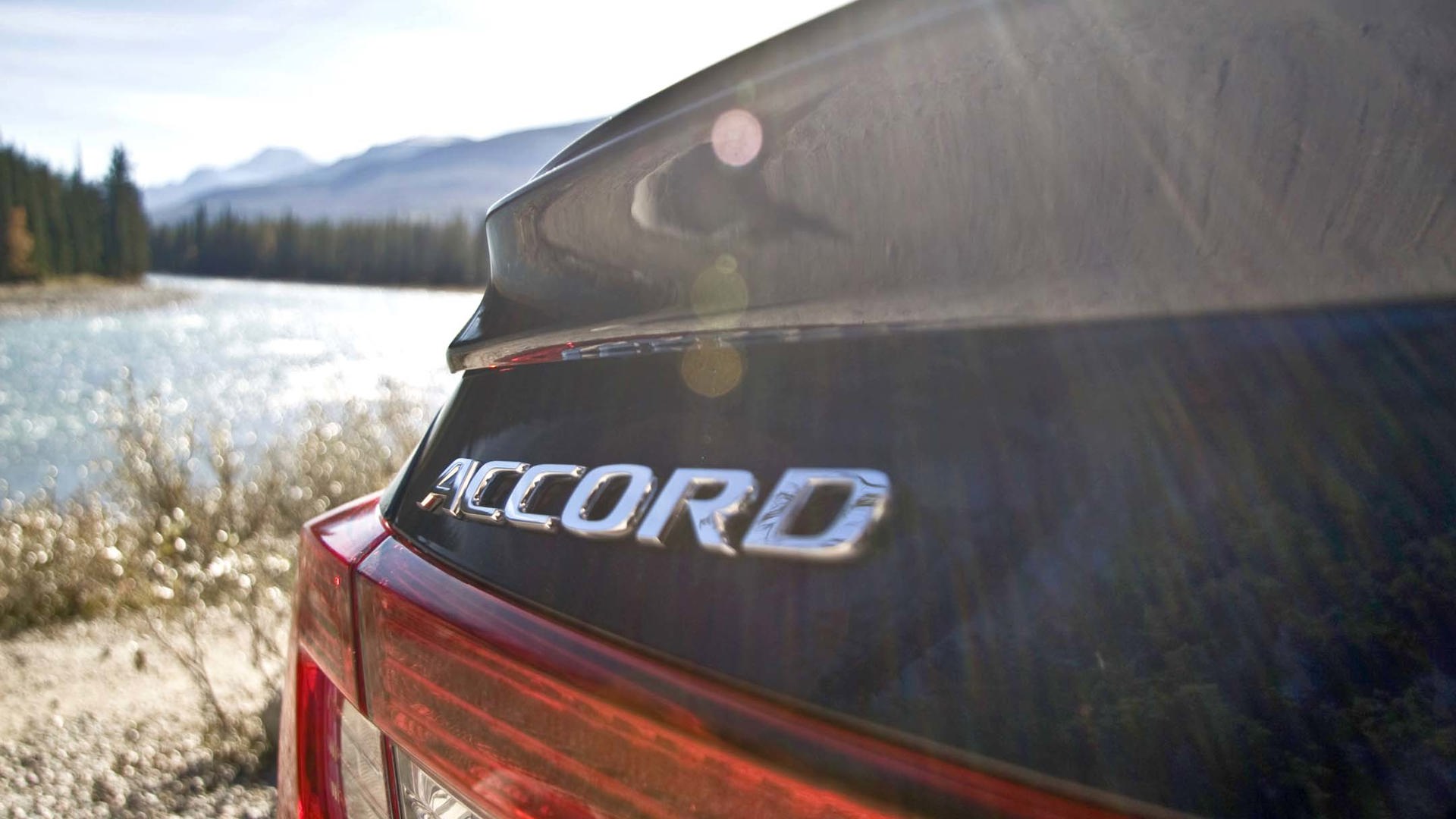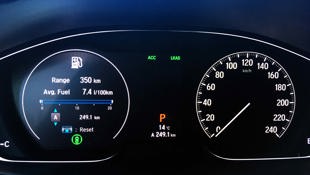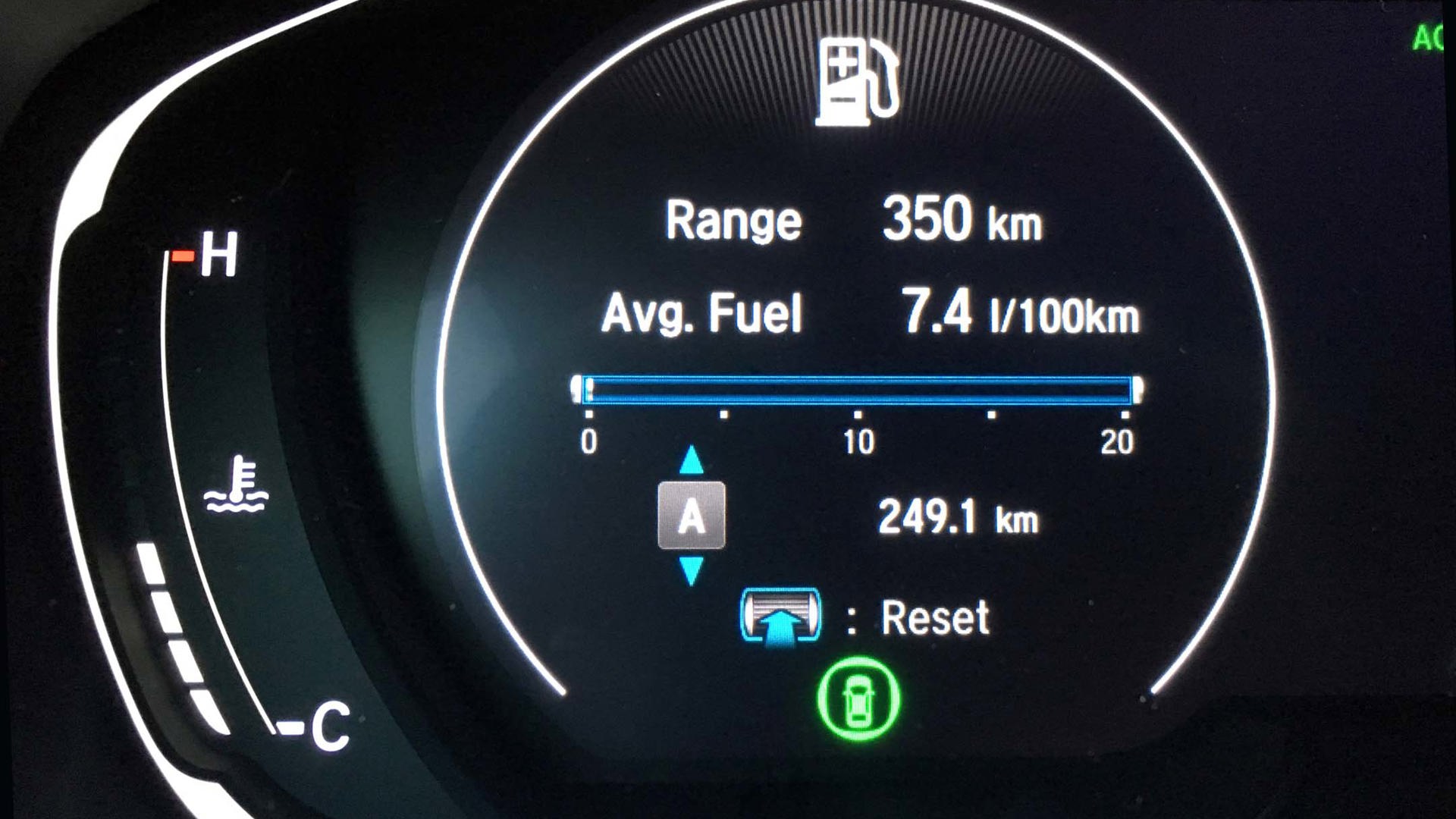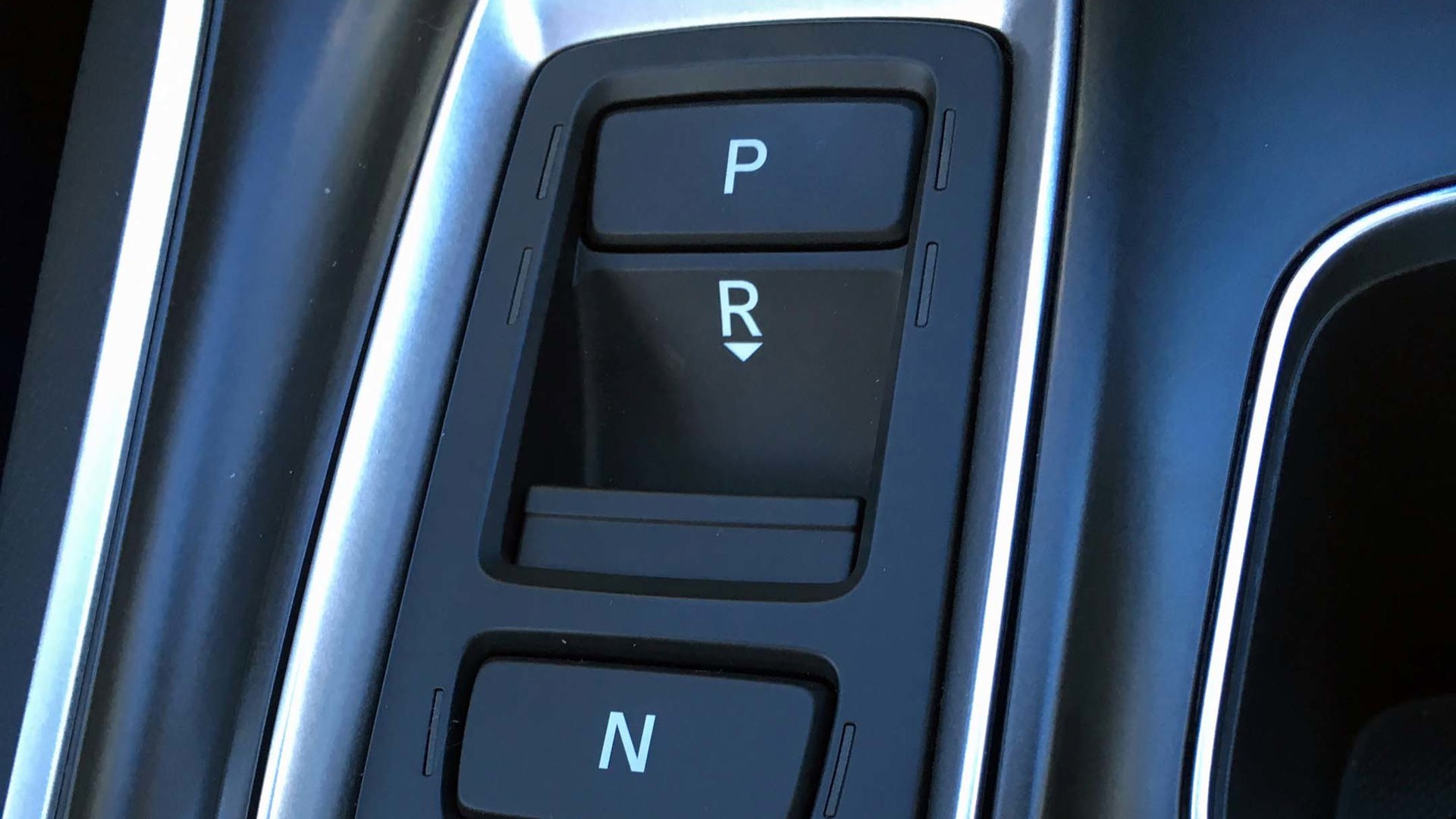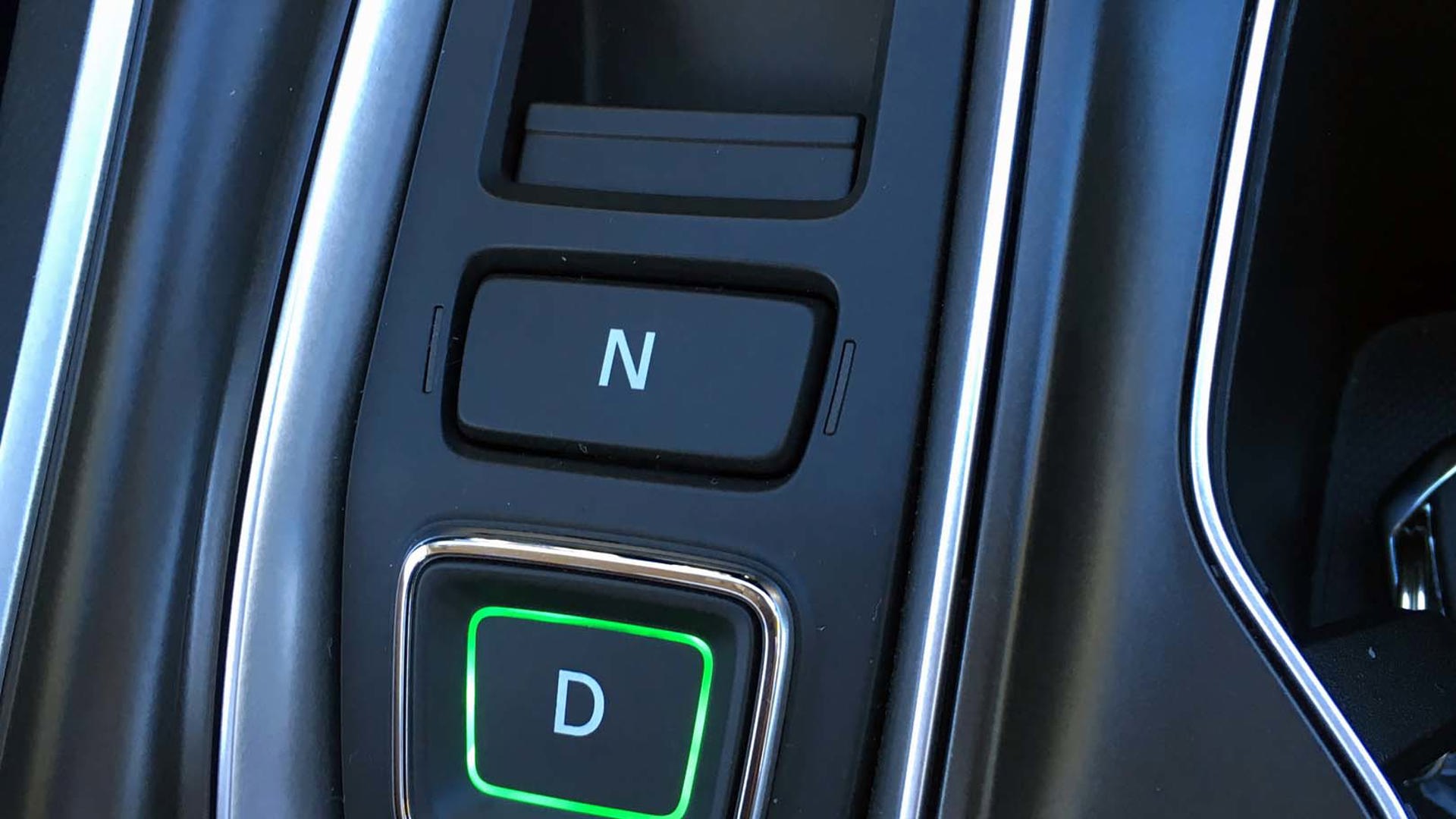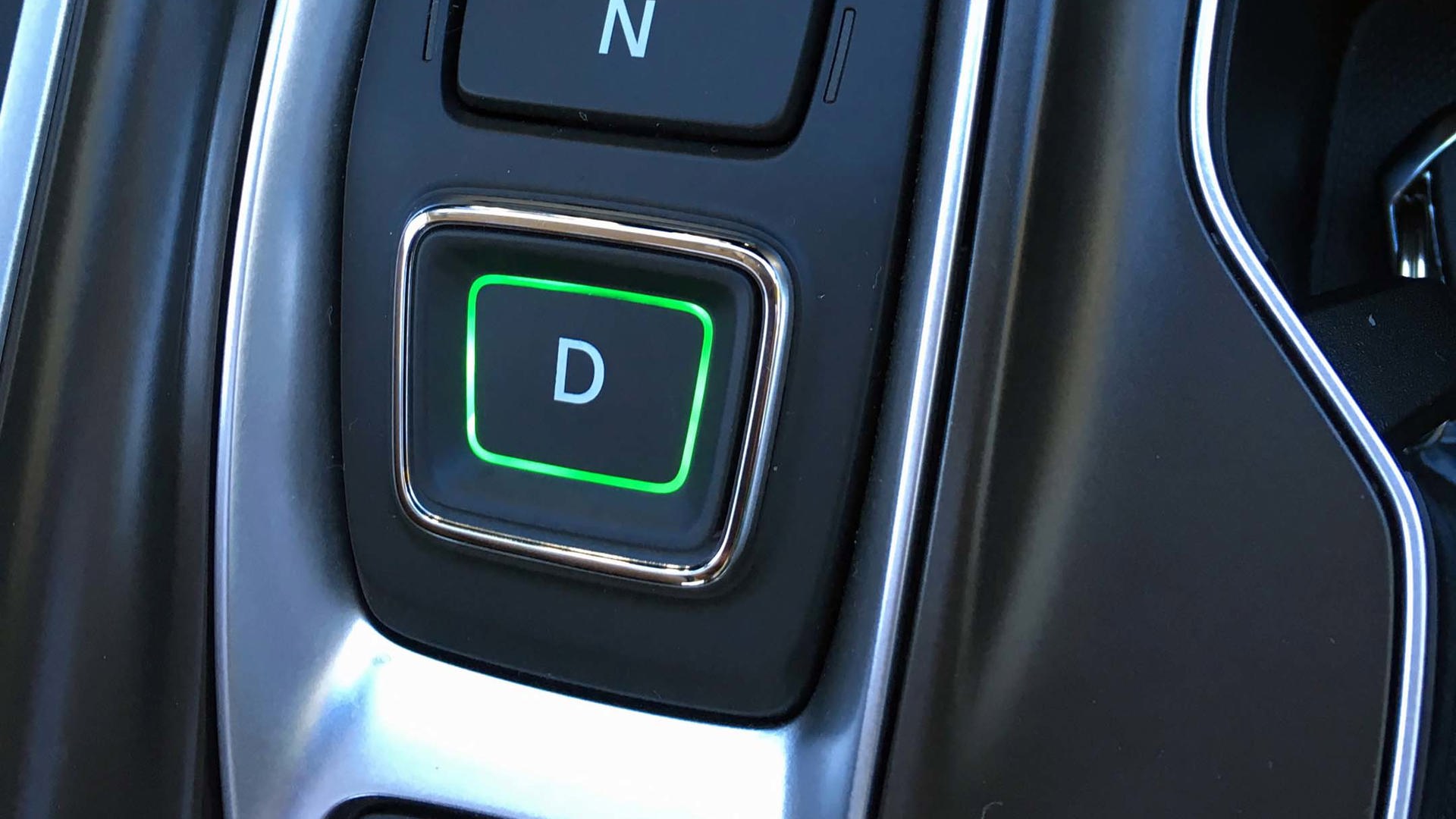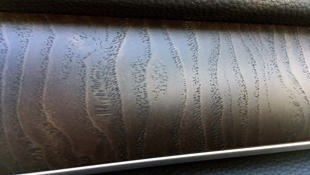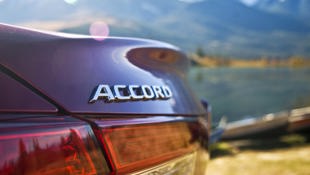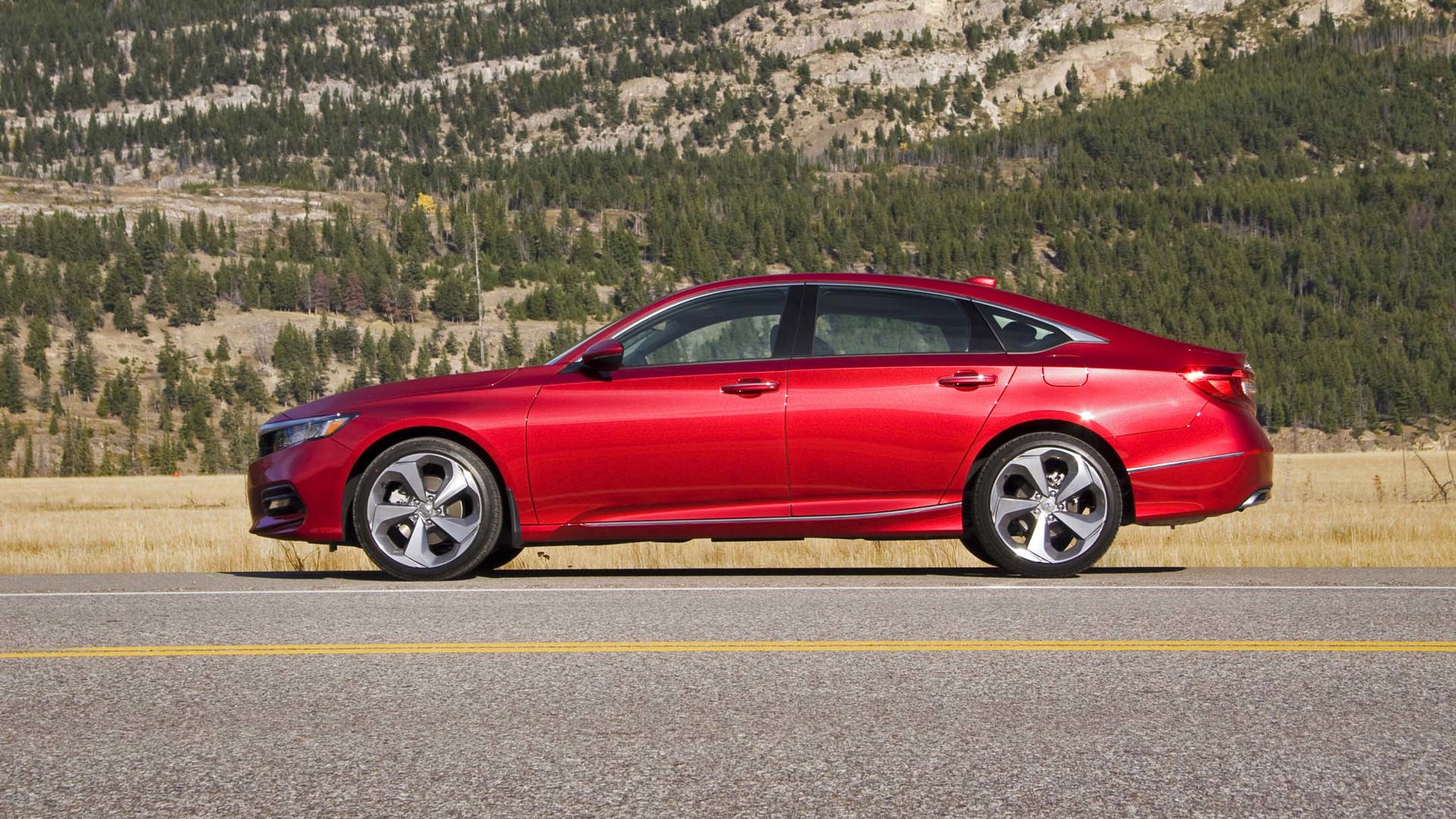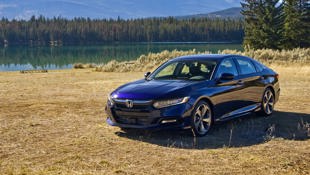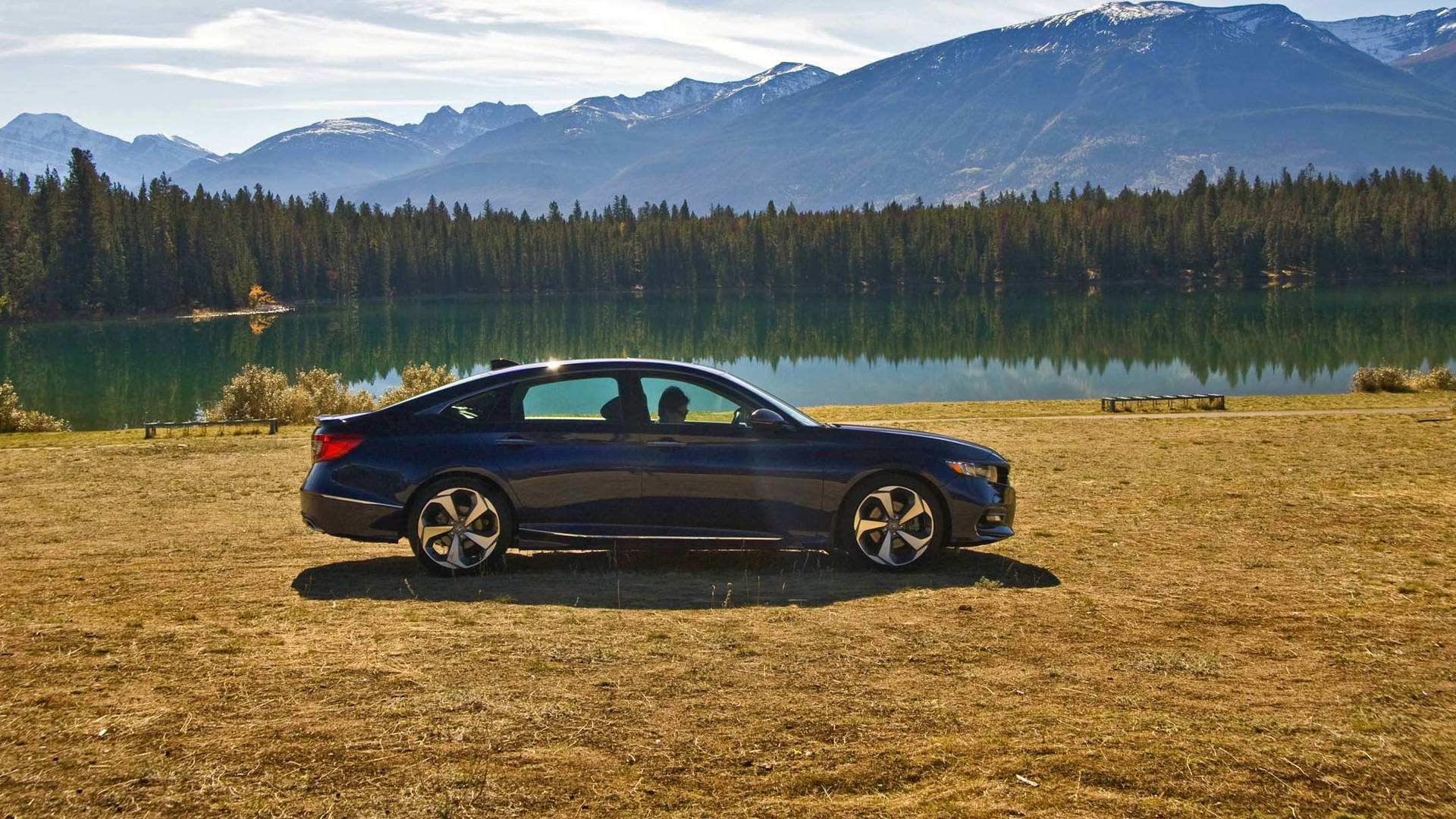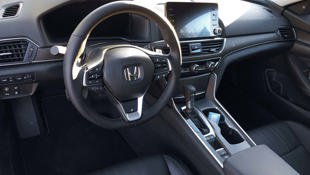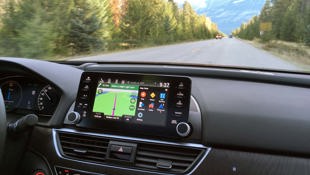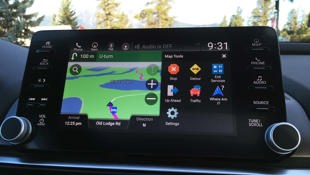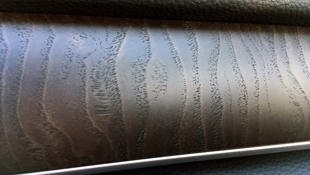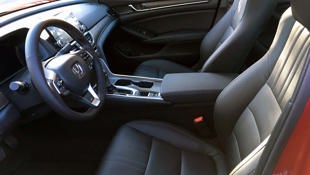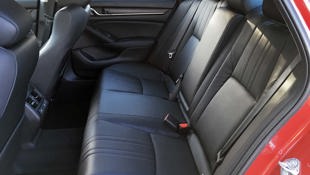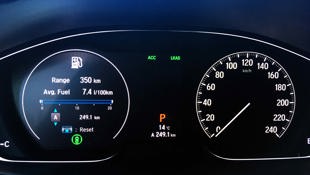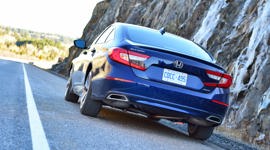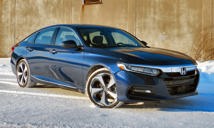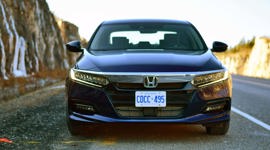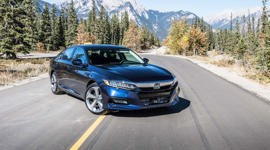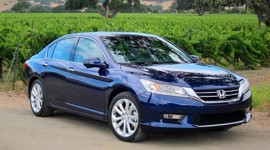JASPER, AB – There are few things more vexing to a driver than coming up upon slow-moving traffic on a spectacular stretch of road. Running alongside the Athabasca River, and framed by snow-capped peaks, Jasper’s Highway 16 is one of the world’s best drive routes. Fortunately, the height of tourist season is behind us, and our encounters with the dreaded rental camper were mercifully few. But the caravan we’ve been held up behind for several minutes now seems oblivious to the growing line of traffic, as it slowly meanders across the pavement and finally comes to a stop on the shoulder. There are some 3,000 bighorn sheep in Jasper travelling in groups like this one, and their magnificent nautilus headgear, and rabbity little tails nestled in creamy white rumps are always a welcome diversion. Especially when they willingly obliged us by posing with the 2018 Honda Accord we’re driving.
The Accord can no longer rest on its formidable laurels if it’s going to survive this tough market.
Honda’s compact Civic has never lost its momentum as it barrels on towards 20 years as Canada’s top-selling passenger car. But the Accord has been steadily losing ground. The entire mid-size sedan segment has been in a slow downward spiral for several years now, thanks to the growing popularity of crossovers, which accounted for 40 percent of all new vehicle sales in 2016. Once the mainstream automaker’s bread-and-butter cash cow, mid-size sedans are now treading water, struggling to stay afloat while their competitors slowly go under.
Honda sold just under 14,000 Accords here in Canada last year, edged out by the Ford Fusion at 14,424 and the reigning Toyota Camry with 15,683. By comparison, Canadians bought nearly 50,000 Toyota RAV4s and roughly 45,000 Ford Escapes and Honda CR-Vs.
Even though mid-size sedan sales dropped by more than 10 percent last year, Honda says they remain committed to the segment. The customer base may be shrinking but the buyers are still out there; roughly 95,000 Canadians bought a mid-size sedan last year.
Now in its tenth generation, the Accord has sold 870,000 units here in Canada since its 1976 introduction. But like its main competitor, the Toyota Camry, the Accord can no longer rest on its formidable laurels if it’s going to survive this tough market. Instead of gliding along in modest, reliable efficiency, the mid-size sedan has had to re-invent itself – by offering near-premium levels of comfort wrapped in a more emotionally appealing package.
Euro styling plus near-luxury interior ambiance
Aesthetically the new Accord is a winner, featuring the same fastback roofline that characterizes the Civic but with sleeker lines and a more mature, upscale profile. There’s a strong Audi A6-like European flavour to the moulded sheet-metal, with its pushed-back cabin, long nose and shorter rear deck. The grille is strong, if a bit busy with full signature LED headlights on upper trim levels, and the rear end has a Germanic tidiness – although some noted Chevrolet Impala similarities in the C-pillar and rear quarter panel. Touring models could lose the upswept chrome trim that runs from behind the front wheel to the haunches – it’s fussy and visually jarring. Of note is the flowing, seamless connection between the roof and body, undivided by a black, plastic channel. It’s a subtle design feature you’d expect in a premium luxury car.
The 15 mm lower, 10 mm wider stance gives the Accord a more dynamic presence, and the 55 mm longer wheelbase allows an all-important increase in cabin space: 49 mm more legroom and a cargo jump of 34 litres.
Roomy, expansive, and upholstered in leather and soft-touch materials, the cabin has moved from respectable comfort towards premium luxury. The one-piece, soft-touch instrument panel is nestled in a curved dash that wraps around the cockpit to merge with the doors, embracing the occupants. Seating is lower, allowing for more headroom, and the A-pillars have been narrowed and pushed back to improve visibility.
Instead of the fussy centre console with the universally hated touch interface, there’s now a clean, free-standing display with – drum roll please – circular knob controls. Consumers have been railing about the absence of a simple volume control, and Honda listened.
Instrumentation is crisp and clean with the centre display and TFT housed in a 7-inch screen. It can be customized to show tachometer, or navigation, trip computer or phone status. Available is a 6-inch head-up display, customizable to show speed limit and navigation.
Standard on all Accords is Honda Sensing – their bundled suite of safety systems which includes adaptive cruise control, collision detection with automatic braking, back-up camera, and road-departure mitigation. Upper trim levels get traffic sign recognition, lane-keeping assist, and a steering assist which helps keep the car from wandering within its lane. Gone is the side-mirror LaneWatch camera, a cool feature which was apparently not so popular with buyers.
More turbo, less V6
Of course, the big news is the arrival of two new turbocharged four-cylinder powertrains. There’s been some kvetching about Honda’s decision to drop the venerable V6 from the lineup and we’re eager to see if it’s warranted.
Honda predicts that 80 percent of Accord buyers will opt for the 1.5-litre turbo, with 192 horsepower and 192 lb-ft. of torque. It comes with a continuously variable transmission (CVT), or a six-speed manual gearbox for sport models. The Civic Type R-derived 2.0L turbo, which produces 252 hp and 273 lb-ft, is available with a new ten-speed automatic, or the six-speed manual.
Most of our time was spent behind the wheel of a 1.5L-equipped Touring model with CVT. Although I’m not a fan of this kind of gearbox, they’ve really come a long way in terms of refinement. It’s only when the throttle’s abruptly pegged without using the paddle shifters that the tell-tale drone becomes apparent. The engine’s small, but several technologies maximize its efficiency, such as a low-inertia turbo, new wide-spread fuel injectors and a new integrated four-into-two exhaust manifold cylinder head. Peak torque is available from 1,600–5,000 rpm, so the power-band is readily accessible. For most people, this is really all the power you need.
The tight curves, back-and-forth switchbacks, and climbing elevations on our way to Athabasca Falls were a great test of the Accord’s new chassis and suspension. One thing became readily apparent: it’s no stodgy reliable appliance anymore. Plenty of effort has gone into refining the Accord’s ride and handling, to the point where it’s as poised and quiet as a premium sedan. Extra insulation and noise cancellation software serve to make the cabin a quiet place, although there is some noticeable tire thrumming over the rougher roads. Thanks to more ultra-high strength steel, 32 percent greater torsional rigidity and a new L-shaped aluminum front suspension replacing the former A-arm, the new Accord handles like a premium touring sedan. There are three Drive settings – Normal, Sport, Econ – which change shift and throttle mapping, and attacking the corners is more fun than I ever expected to have in an Accord.
Swapping the 1.5L for the larger 2.0L Touring gets us adaptive suspension, with solenoid valves altering the damper’s rebound and compression levels. The push-button transmission controls are initially off-putting – but that’s probably just a traditionalist’s reaction. With wheel-mounted paddles, a conventional shifter becomes unnecessary and it frees up a lot of console space.
The jump in power is noticeable: this is a smooth, strong, lag-free engine whose power-band is maximized by the super-efficient new ten-speed. Peg the throttle to pass a slow-moving caravan and you’re rewarded with an instant burst of speed. We weren’t able to sample the manual, but the new 10-speed is slick and, with the 2.0L’s torque range from 1,500–4,000 rpm, delivers enough power to spin the wheels at a green light if you’re so inclined.
Lighter, more efficient, and more powerful than the V6 it replaces, the 2.0L may lack the thrilling engine note of the larger six-cylinder, but it’s superior in every other way. Equipped with this powertrain, and the new adaptive suspension, the new Accord is edging very close to becoming a premium sporting sedan.
The 2018 Honda Accord starts at $26,490 for a base 1.5L LX with six-speed manual, right up to $38,790 for the 2.0L Touring model with adaptive suspension. The 1.5L models will arrive in dealerships by the end of October, with 2.0L versions coming in November, and a Hybrid to follow early next year.
